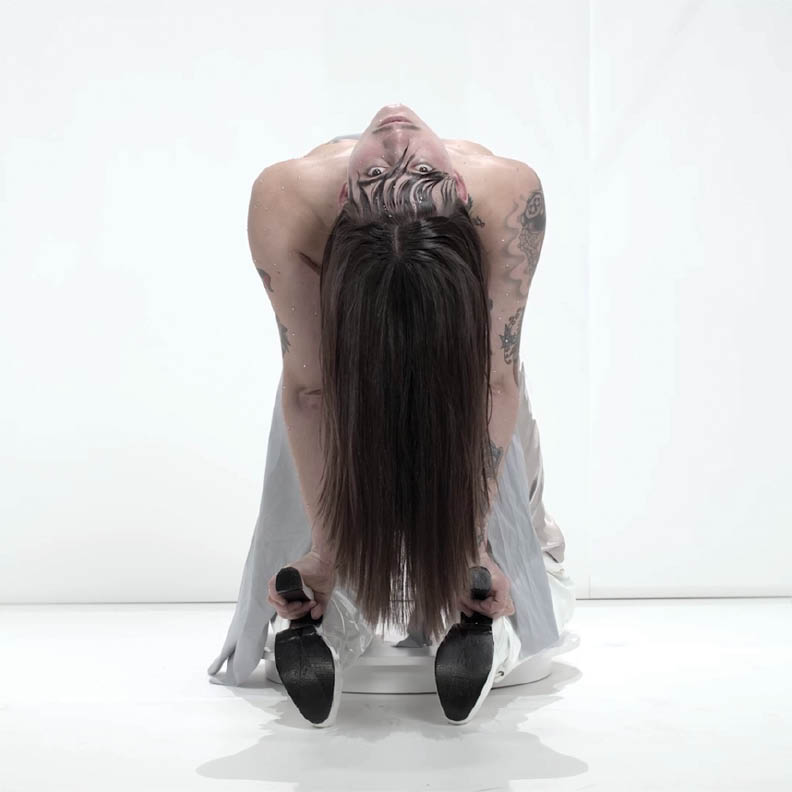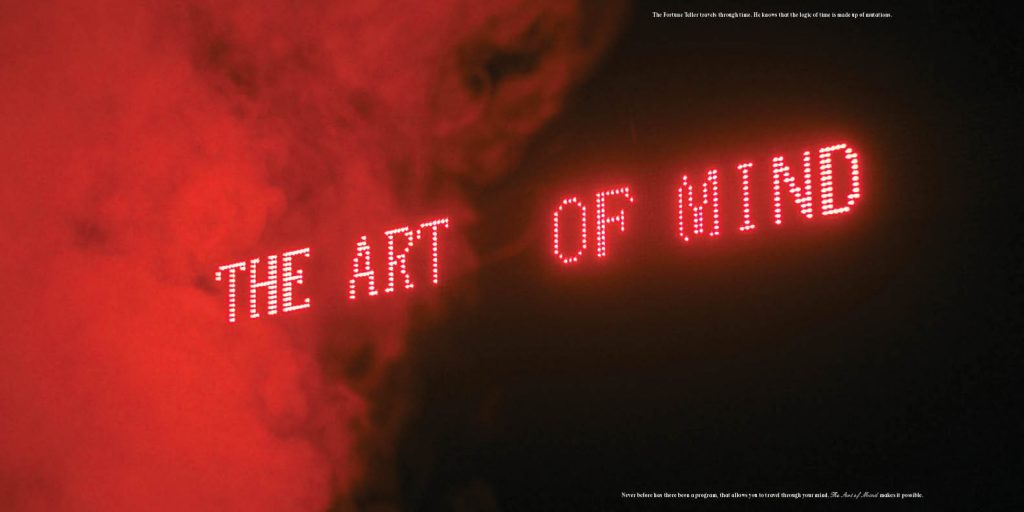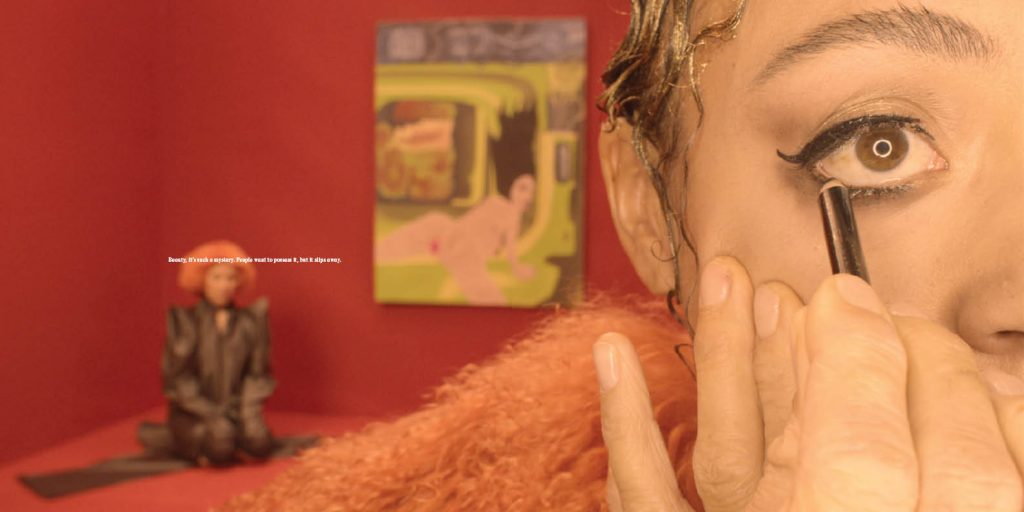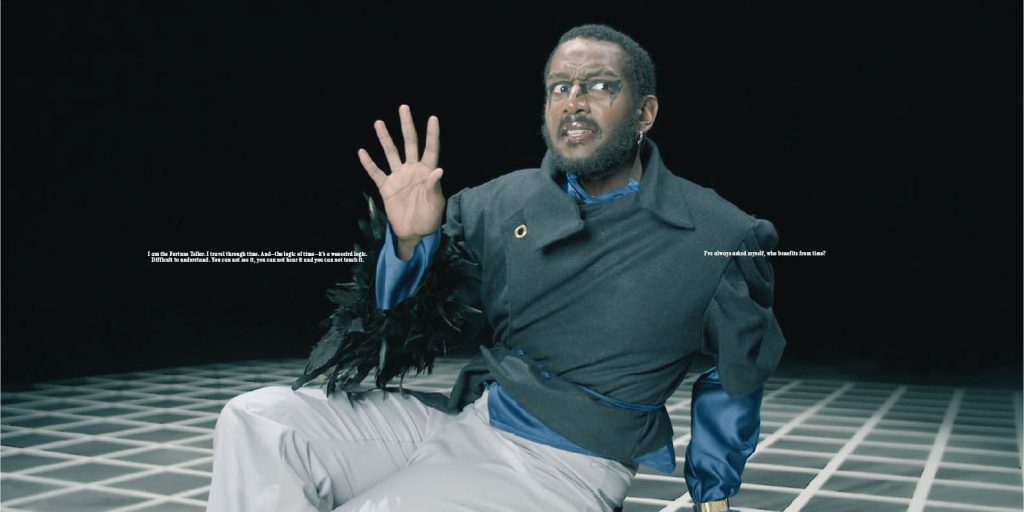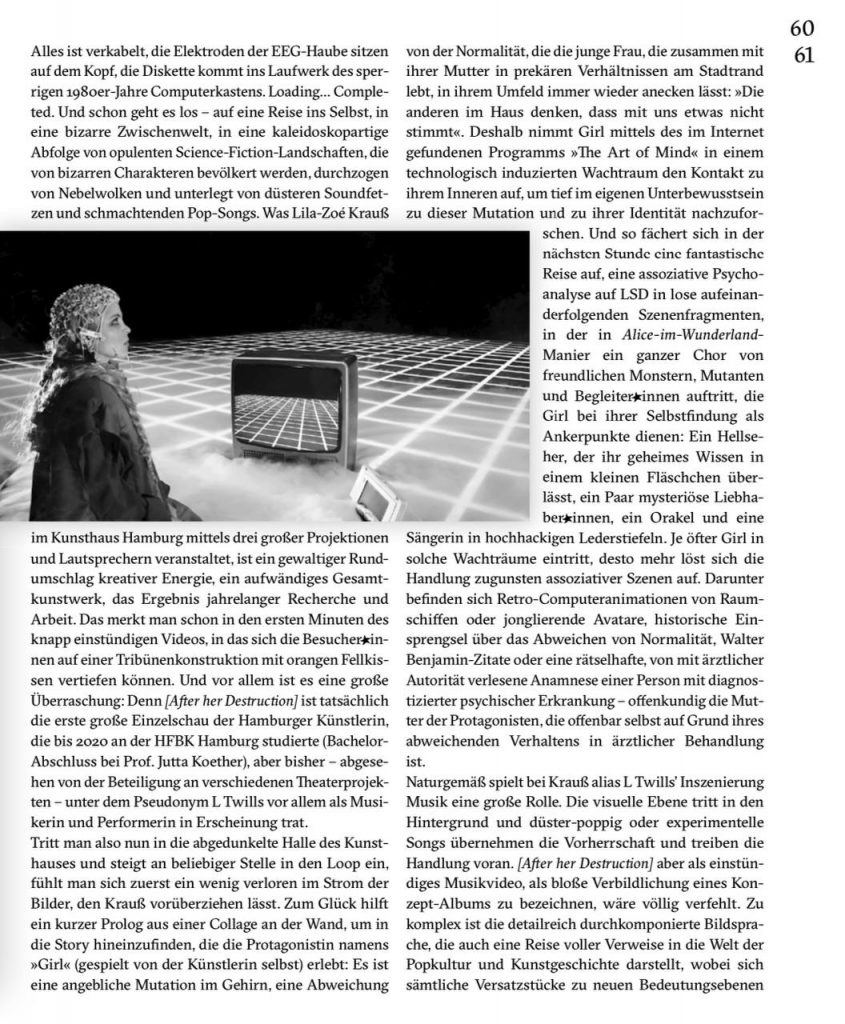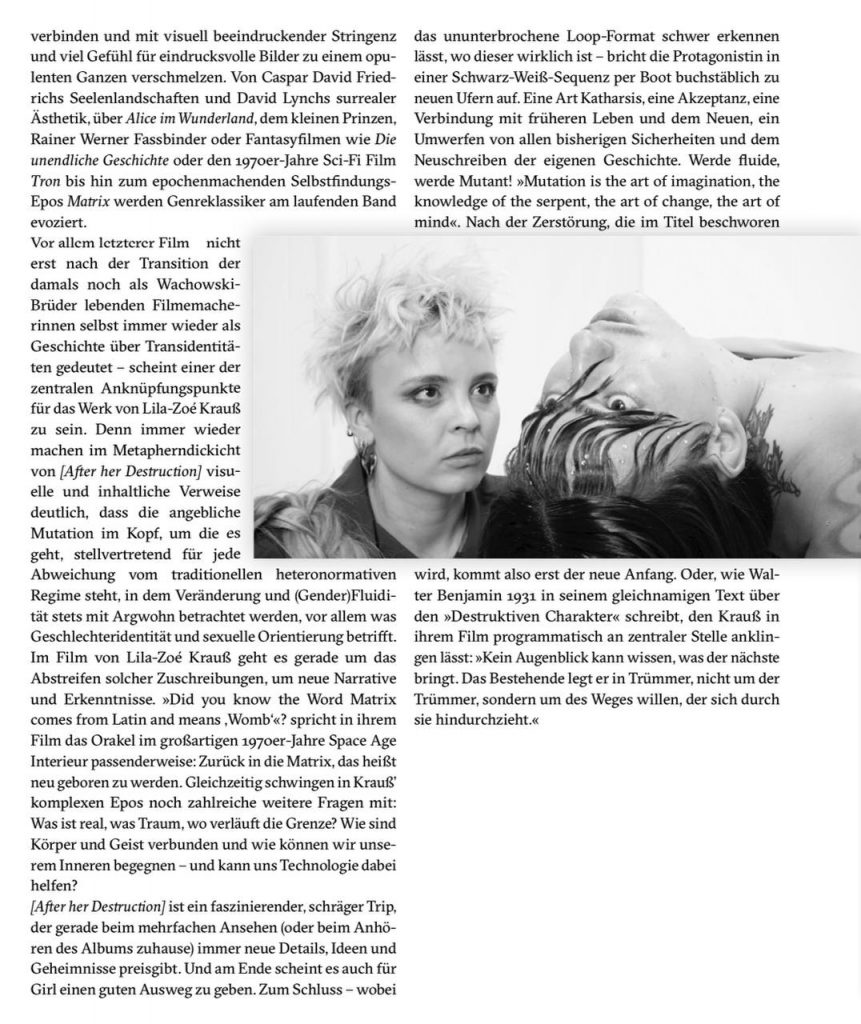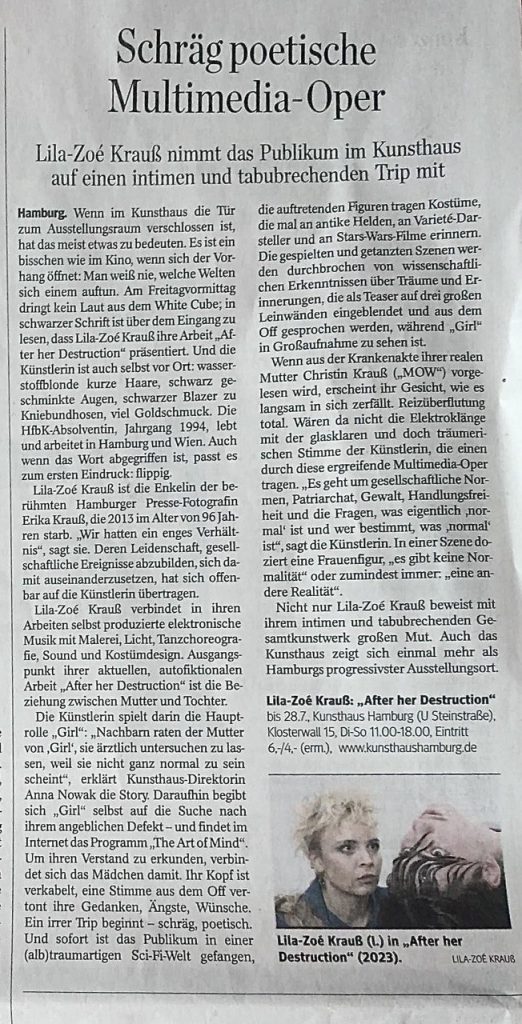[After her Destruction] is a long-term research-driven multimedia opera project, that was conceived by Krauss and produced in collaboration with a team of 20 artists and performers, from 2022-2025. The project is structured through several evolving iterations that continuously trouble and over-write one another. These iterations include 8 video chapters, 20 compositions, theatrical productions, writings, live performances and multi-channel installations.
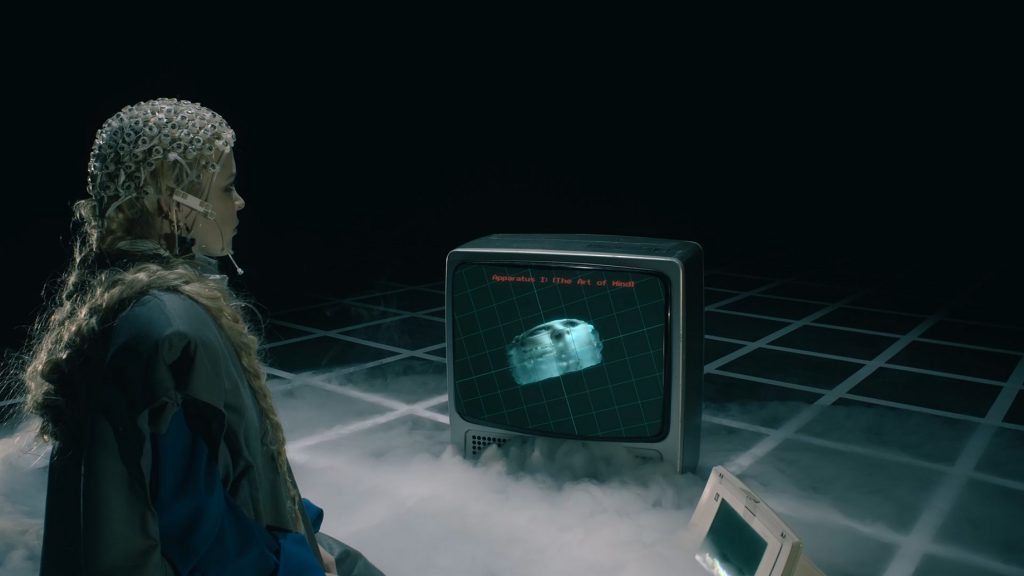
Storytelling/Worlding
Narrative Style
At the center is the autofictional character Girl. As the structuring agent for the project‘s questions, the narrative and character system initially unfolds around Girl and is viewed from her perspective. In the course of the opera play, a net work of actors emerges whose positions and perspectives
influence each other and jointly shape the narrative. The characters were created and developed in collaboration with the performers. Depending on the form of presentation (video, performance, installation), the project appeared in different constellations, montages, temporal con
texts, and thematic focuses.
Narrative
The story begins in 2013: Girl lives with her mother MOW (Manic Old Woman) on the outskirts of a German city. When MOW is admitted to a psychiatric clinic, Girl is left home alone. Due to her boundless imagination, neighbours judge her to be “not normal.” To find out whether there is any truth to the suspicion of a “mutation of her mind,” Girl discovers the program The Art of Mind on the Internet. This tool, based on neurofeedback technology, creates a walk-in 3D interface between mind and machine, in which Girl travels through lucid dream spaces and hallucinatory scenarios.
The encounters in this virtual world—with characters such as the Fortune Teller, the Mysterious Lady without a Name, her mother MOW, or the Choir of Mutants—form a web of symbols, dialogues, and metaphors. Questions of normality and deviation, beauty, desire, and freedom permeate the scenes. The characters embody alternative ways of living beyond normative categories and open up utopian spaces for thought and experience. Playing with perception becomes an essential part of the narrative. The tension between how others judge us and how we perceive ourselves becomes a negotiating space for autonomy and freedom. “Do you even know the story of Girl, Girl?” asks the Fortune Teller, suggesting that narratives are constructed and therefore changeable:
“Mutare; that means change. You know, some people are afraid of change.”
With each dream, the program and Girl‘s mind seem to merge more and more, until it becomes almost impossible to tell who is actually steering the journey. Girl‘s attempt to understand the alleged mutation turns out to be a search for self-determination and political imagination in a patriarchal-capitalist society in which violence is generated by classism, racism, and misogyny. The opera asks how subjectivity can be conceived in the
field of tension between social attributions and technological possibilities. “Mutation” is understood here not as a deficit, but as a poetic strategy: as an opportunity to reinvent identity, rewrite history, and open up spaces beyond normative orders.
Cast & Team
Girl – Lila-Zoé Krauß
The Mysterious Lady Without Name –
Linda Elsner
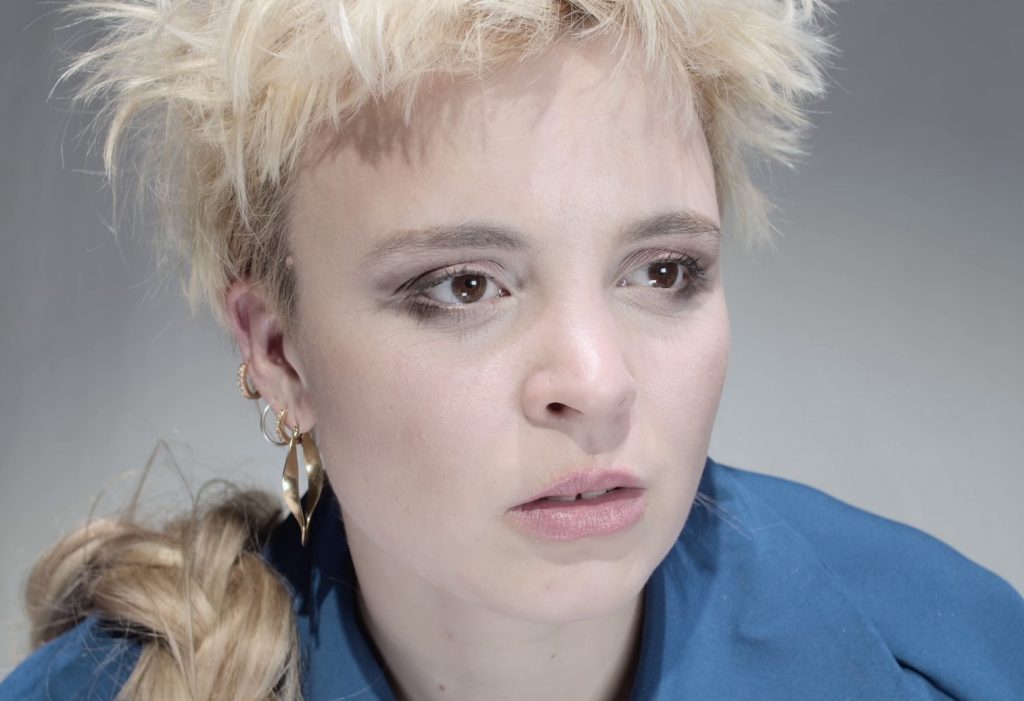

Lover – Sibylle Peters
MOW – Christin Krauß


Fortune Teller – Elliot Reed

Snake
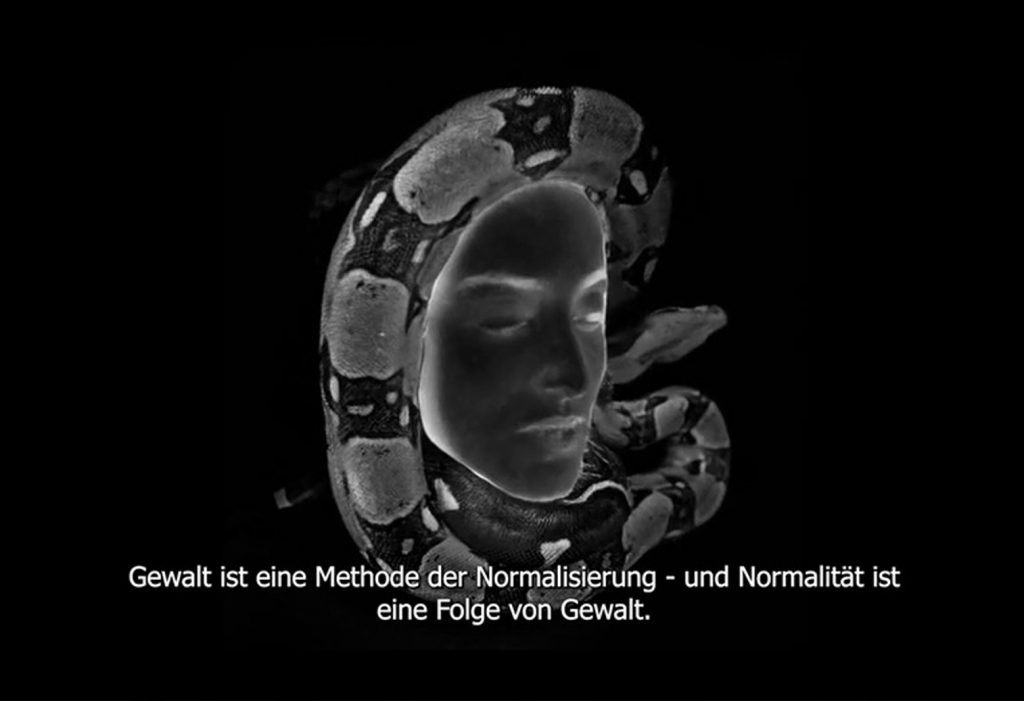
Mutant – Lex Calimero Schnäbele
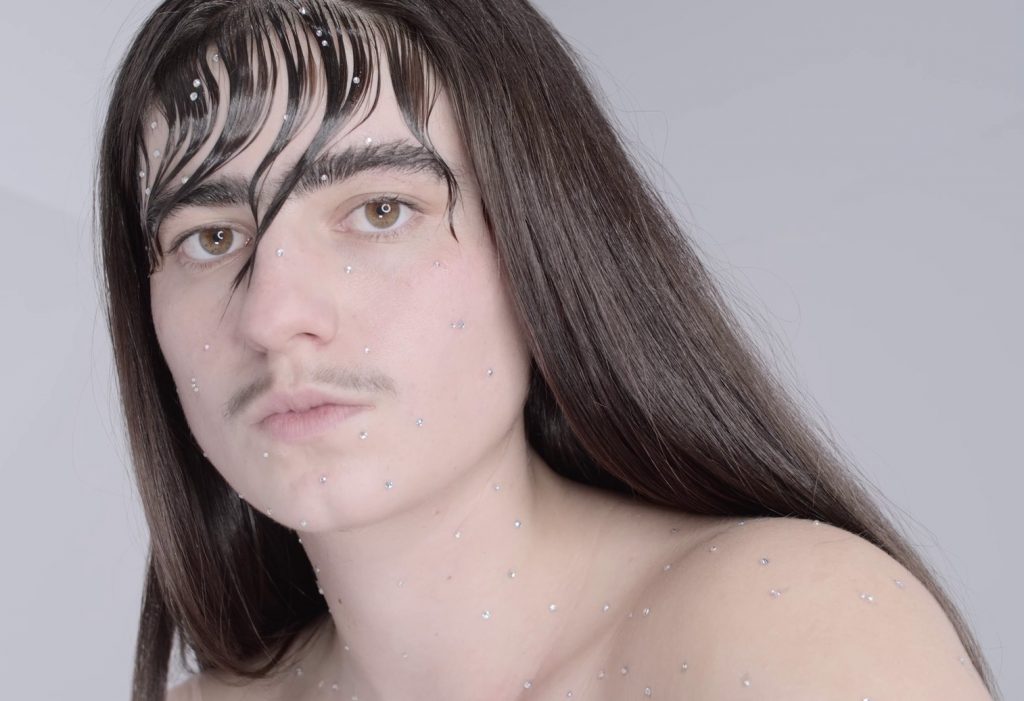
Superego – Ophelia Young
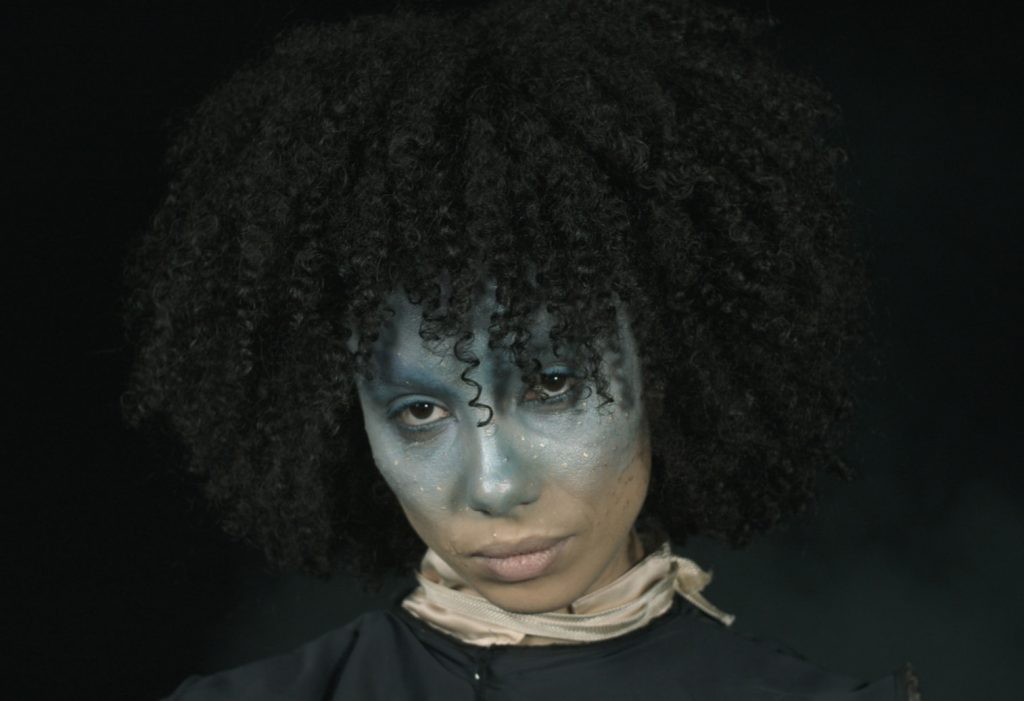
[Choir of Mutants]
Haiqing Wang
Rebecca de Toro
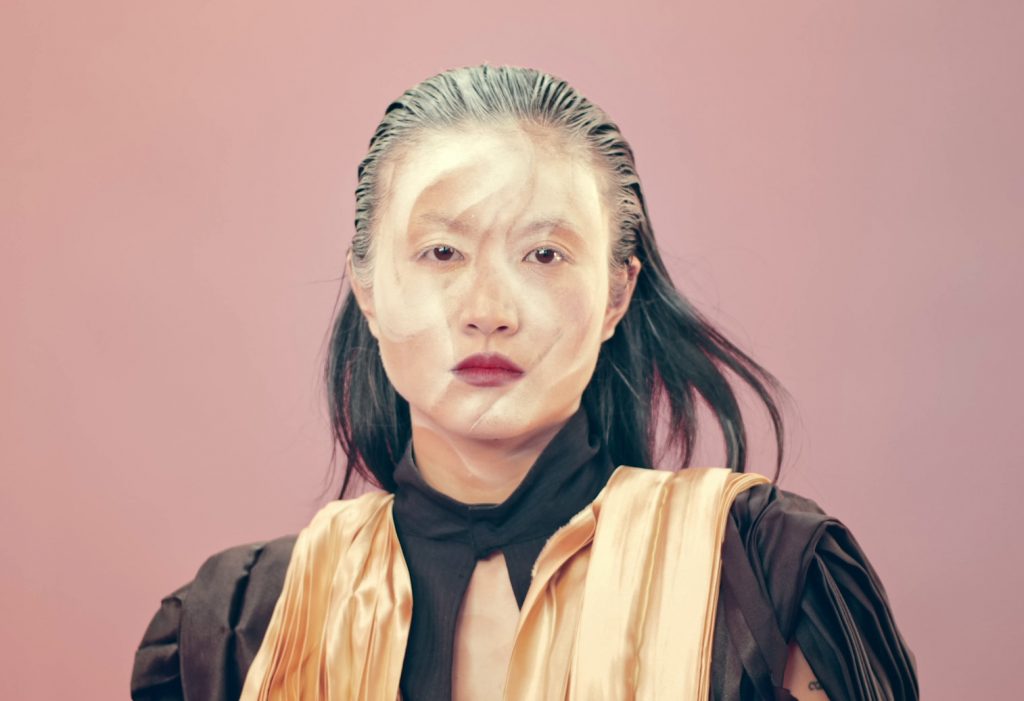
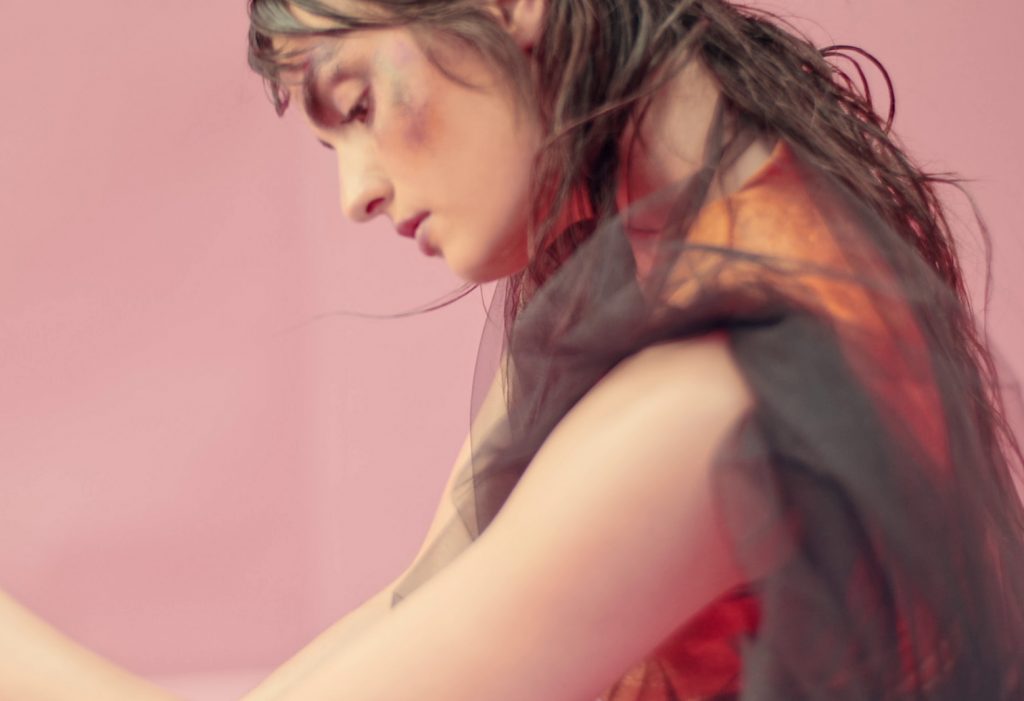
Anto López Espinosa
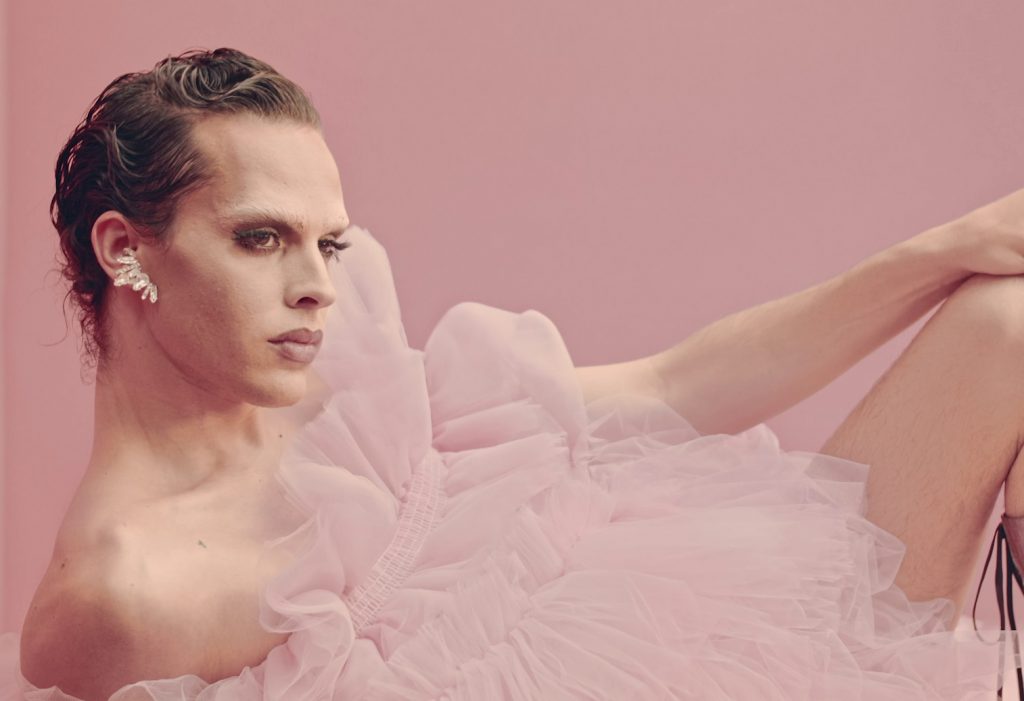
Luïza Luz
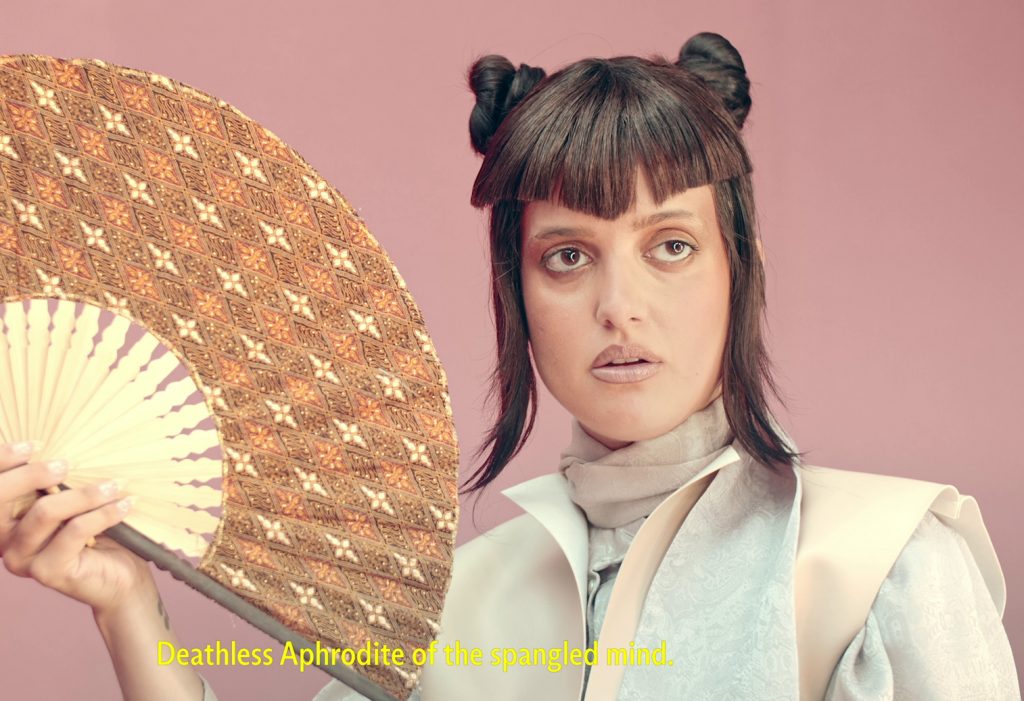
Don Jegosah
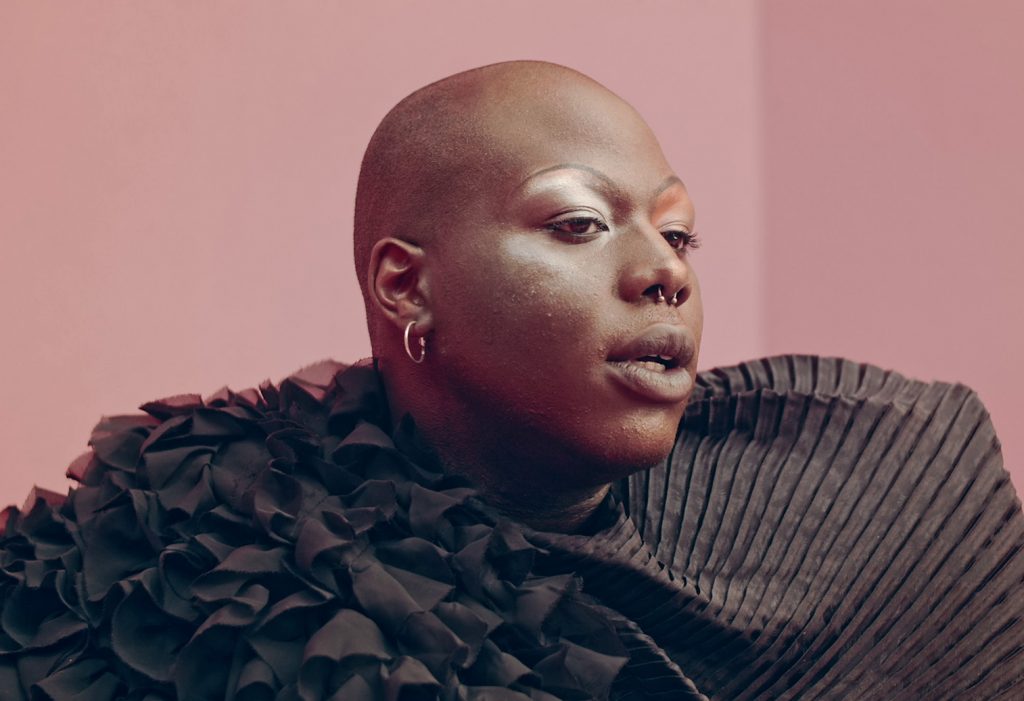
Suma Abdelsamie
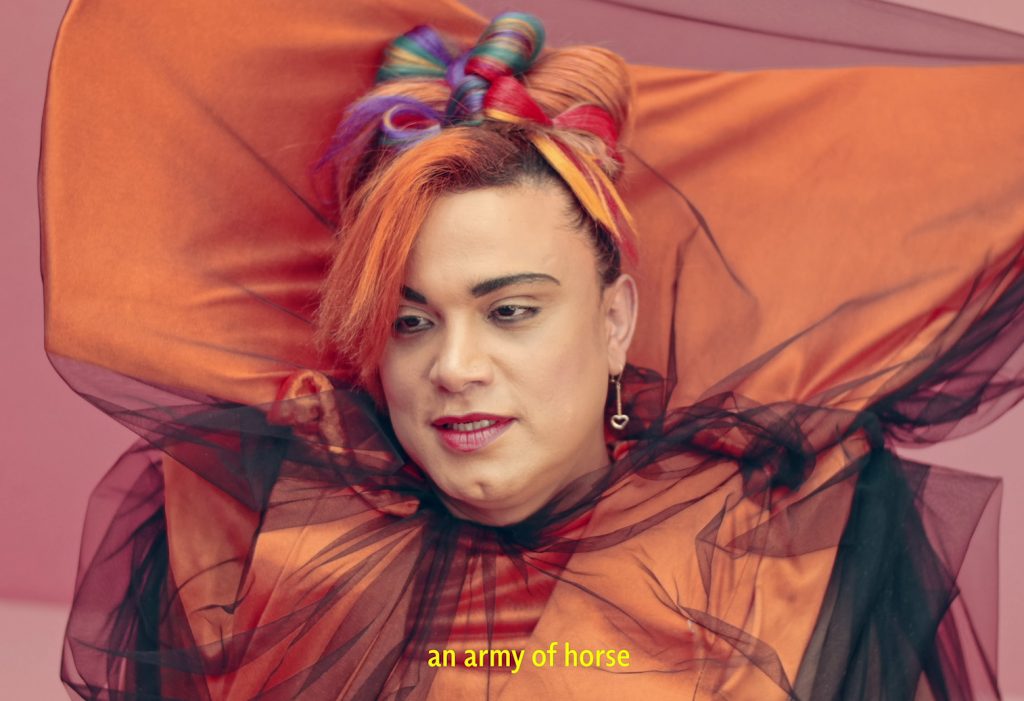
Team
- Production, Directing, Concept, Script, Music, Sound Design, Costume, Editing, Art Direction: Lila-Zoé Krauß
- DOP, Co-Director: Helena Wittmann
- Set Creation: Ricarda Johanna Schwarz
- Light Operator: Julian Gillman, Suzanne Caroline de Carrasco, Lars Rubarth
- Sound Recordist: Nikoloz Mamatsashvili
- Hair & Make-Up: Maike Albeck
- VFX & Color Grading: Jacopo Fant
- Sound Mixing & Mastering: Helge Hasselberg
- Vinylmaster: Martin Sukale, Ramona Records
- Set Assistants: Laura Haas, Marc Einsiedel, Mattheo Lange, Ben Lauffer
- Production Assistant: Suzanne Caroline de Carrasco
Produced in cooperation with Hanseplatte, Misitunes and Kampnagel
Funded by Initiative Musik, Rockcity Hamburg, Herrmann Krämer, Hamburgische Kulturförderung, Projektförderung Bmkoes, BKM
Installations
2024 – [After her Destruction] – solo show – Kunsthaus Hamburg
Lila-Zoé Krauß
[After her Destruction], 2024
Camera: Helena Wittmann
3-channel video and 20 sound installation, 58′, Color
Dimensions variable
May 25th till July 28th 2024
At Kunsthaus Hamburg, the audiovisual music and opera project [After her Destruction] celebrated its premiere in the form of an exhibition, representing the artists first institutional solo show. The work, which comprises 8 chapters, is based on her research into memory and sound alongside an intensive reflection of her personal biography. Krauß has transformed the comprehensive project into a theatrical installation specifically for the Kunsthaus venue. Here, for the duration of nine weeks, the audience was guided through a 58-minute production. Its light, sound and image were dramaturgically orchestrated to turn the space into an immersive stage. On the musical level, electro-acoustic sounds and expressive vocals combine to create dense avant-pop compositions.
Curated by Anna Nowak
(text from press release)
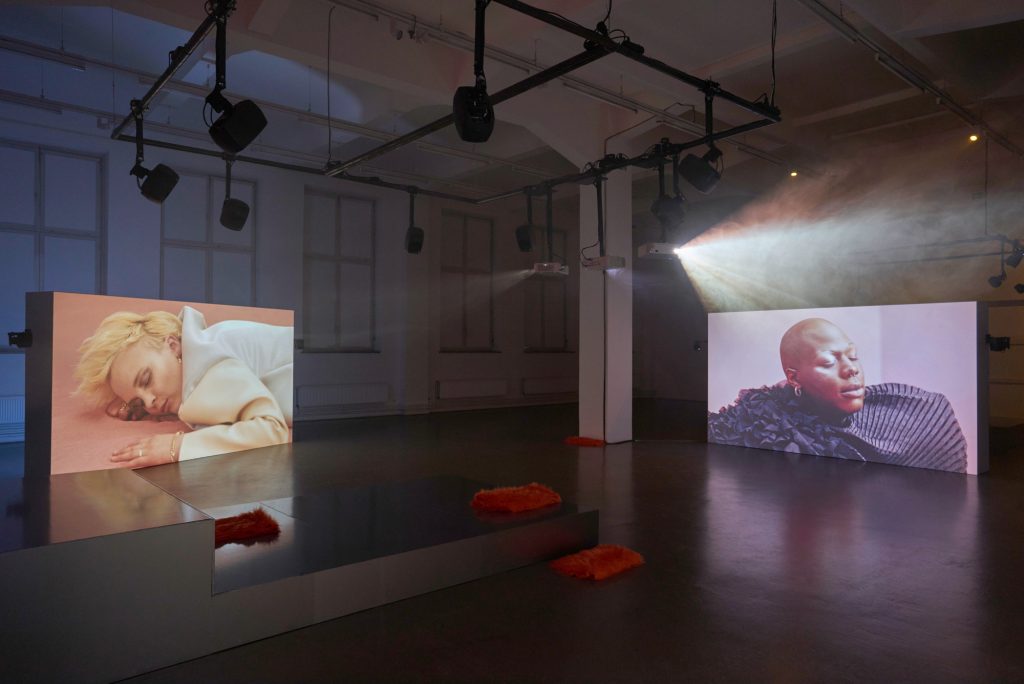
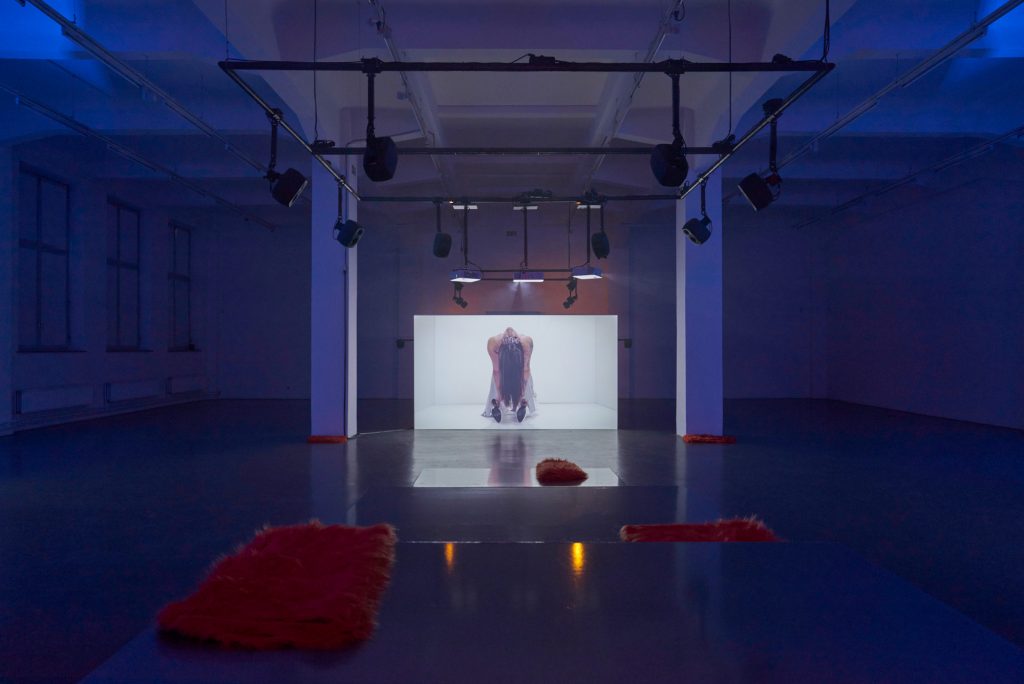
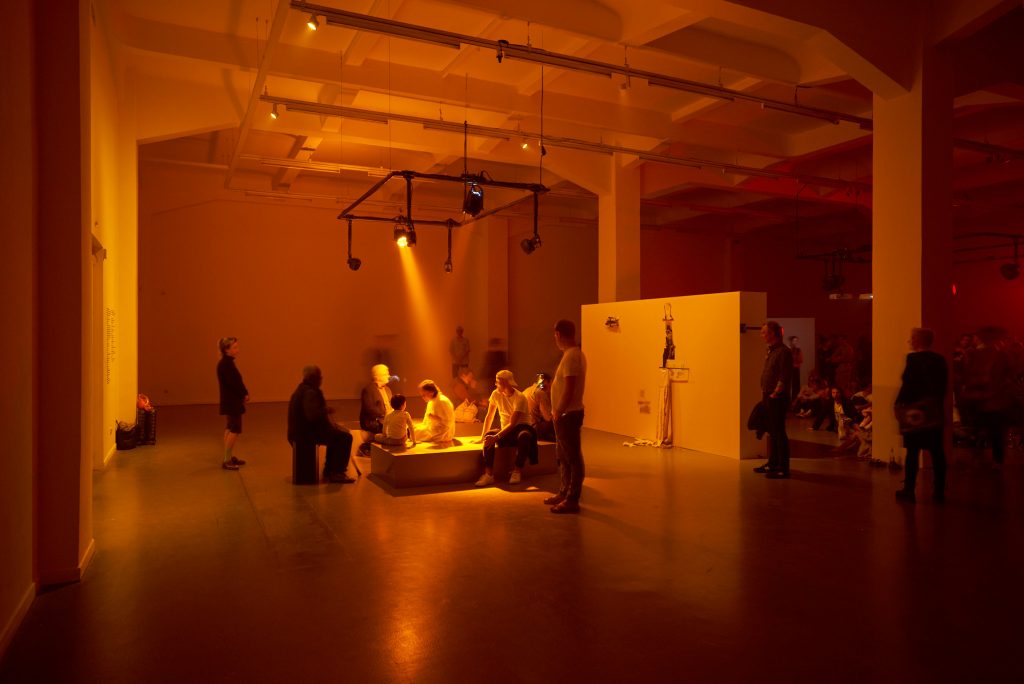

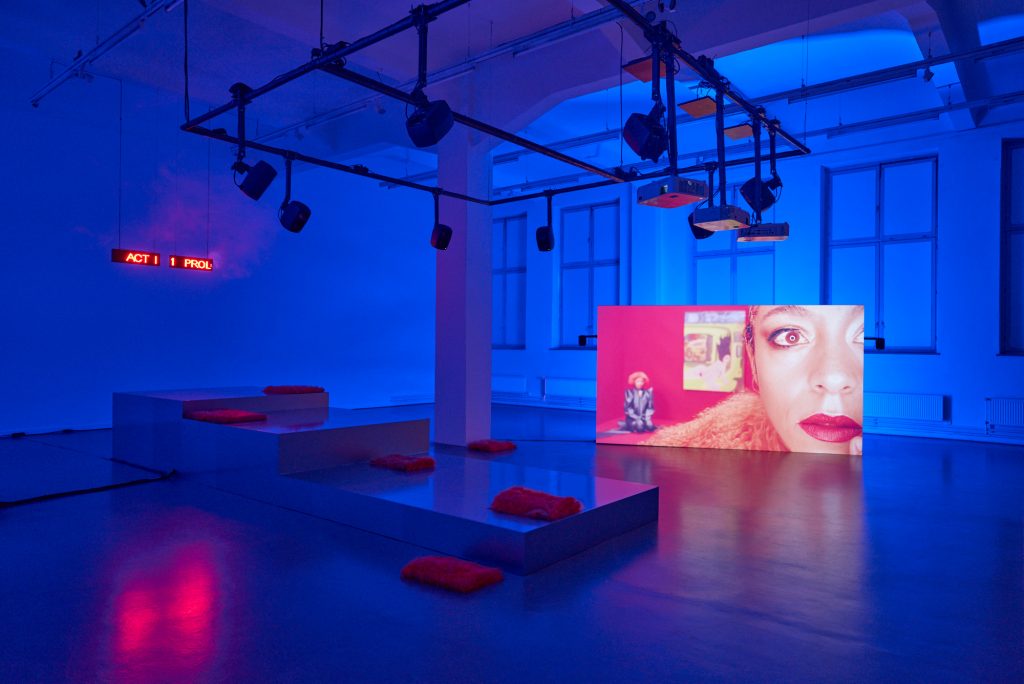
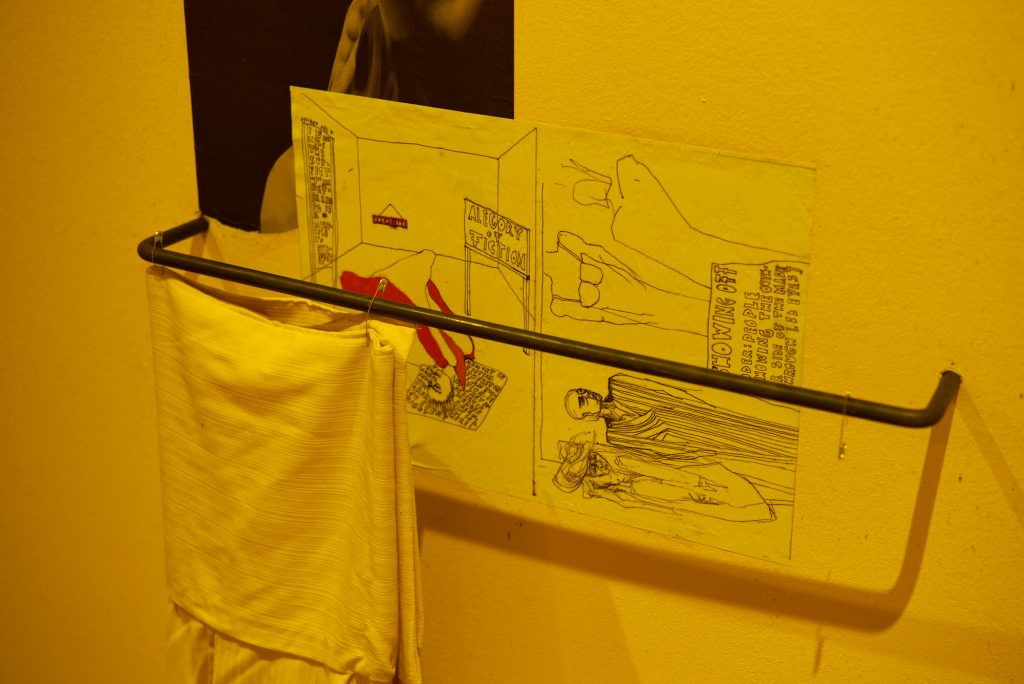
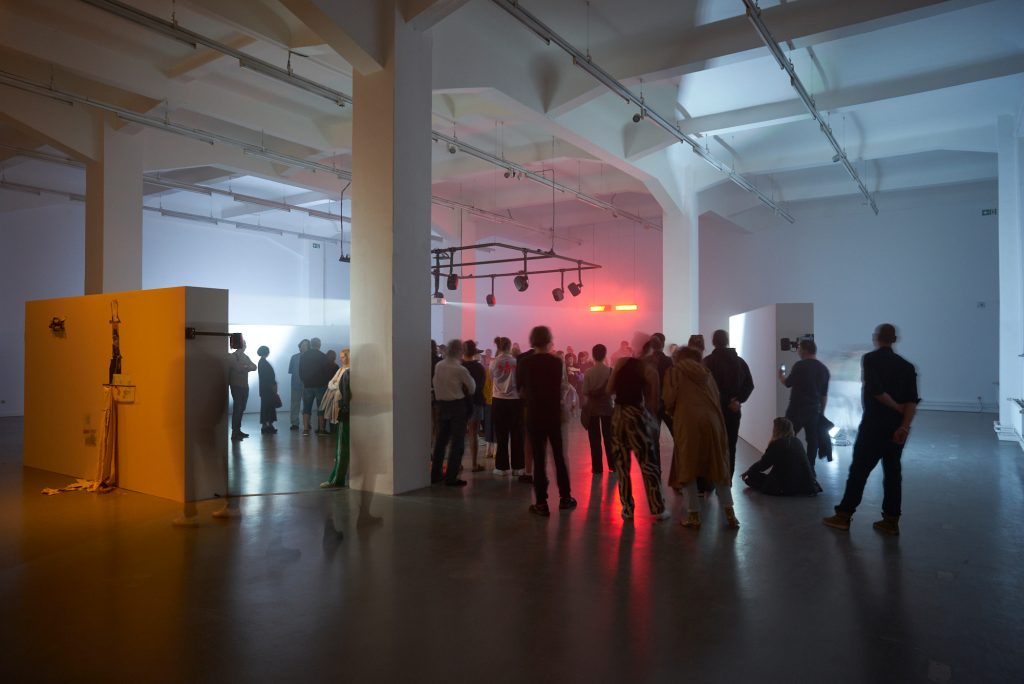
Photo Credit (all images): Lila-Zoé Krauß, [After her Destruction], 2023, Installation view, Antje Sauer
2024 – if you follow the river long enough – Dietikon Project Space – Zurich
Lila-Zoé Krauß
[After her Destruction], 2024
Camera: Helena Wittmann
3-channel video and 4.1 sound installation, 58′, Color
Dimensions variable
Exhibition: 15.11.-15.12.24
Dietikon Projektraum, Im Haus Regina, Zentralstrasse 12, 8953 Dietikon
(curator’s text)
In if you follow the river long enough we suggest to subvert the conventional narrative of the mermaid: condemned seductive and by that dangerous, mutilated for scientific endeavors, called deceptive as their appearance is not one, labeled antonym to purity and virtue, objectified and sexualized in advertisements. Following this figure gives a chance to look behind the shining curtain of power thirsting to master and possess, revealing the actors of stories and histories that shape the narrative of control over bodies, in an all-encompassing sense of the word.
Featuring the work of Seba Calfuqueo, Magali Dougoud, Lila-Zoé Krauß, Sohorab Rabbey, Karrabing Film Collective, the exhibition includes screenings, archival materials, and overviews of cultural references.
Curated by Angela Fusco, Mira Tyrina and Olga Popova.
Mentored by Kim Anni Bassen, Paloma Ayala, Anselm Franke.

2025 – not yet yours to imagine – duo show – DAS WEISSE HAUS – Vienna
Lila-Zoé Krauß
[After her Destruction], chapter: Dream I: [Matrix], 2024
Camera: Helena Wittmann
Multimedia installation:
2-channel video, 2.1 sound, 11′, Color,
‘Dream I: [Matrix]’ tryptich on canvas, ‘Matrix Memory Collection’ Jukebox
Dimensions variable
Exhibition duration: 08.05. – 28.06.2025
‘not yet yours to imagine’ was a duo show at DAS WEISSE HAUS presenting the works Buoyant Force by Henna-Riikka Halonen and Dream I: [Matrix] by Lila-Zoé Krauß
In Dream I: [Matrix], visitors step into a fragmented reality, drifting between presence and illusion. A two-channel video montage is at the center of the installation, dissolving the boundary between screen and space. A newly produced triptych and an enigmatic sound box offer new entries into the story. The scene is part of the multimedia opera [After Her Destruction], in which the protagonist Girl uses a computer program to travel through her mind. In the fleeting encounter with two strangers, a conversation unfolds in a salon-like setting, reminiscent of a chamber play.
For more information see ‘not yet yours to imagine‘
Photo Credit: 1) Xenia Snapiro, 2) Lila-Zoé Krauß
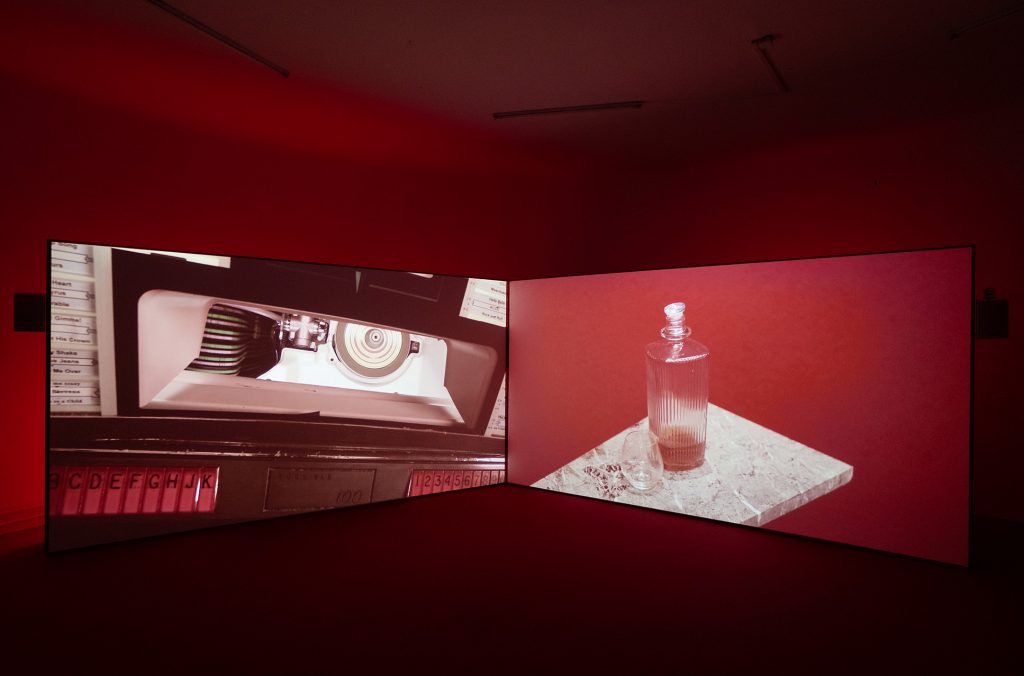
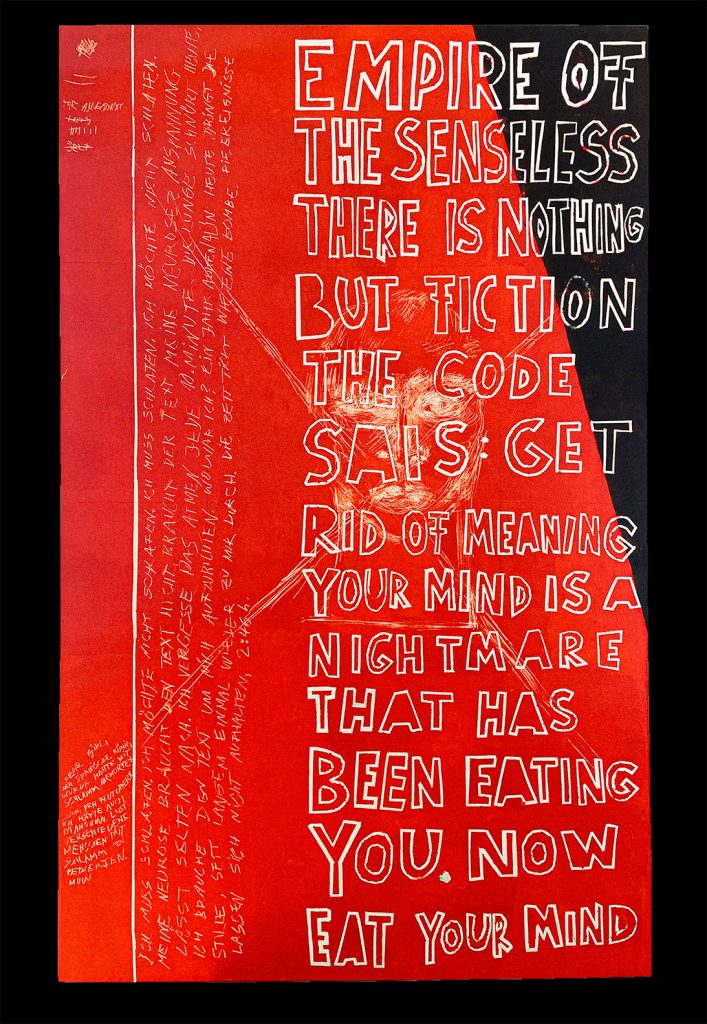
2025 – Shifting – group show – JSF – Düsseldorfer Schauspielhaus
Lila-Zoé Krauß
[After her Destruction], 2024
Camera: Helena Wittmann
2-channel video installation, 58′, color, stereo sound
[After her Destruction] Prolog, 2025
single channel video, 03’30, color, stereo sound,
Dimensions variable
SHIFTING
DÜSSELDORFER SCHAUSPIELHAUS 24 APRIL 2025 – 30 APRIL 2025
The Julia Stoschek Foundation presents nine international media artists in the foyer of the Düsseldorf Schauspielhaus. Curated by Lou von der Heyde, Shifting brings together works by Eli Coplan, Courtesy, Tarren Johnson & Joel Cocks, Klein, Lila-Zoé Krauß, Christelle Oyiri, PRICE, Emma Rosenzweig, and Wael Shawky. The works incorporate theatrical and operatic elements and enter into a dialogue with the architecture of the Schauspielhaus.
The exhibited works engage with themes such as identity, memory, technology, and cultural heritage. Many of the artists reference elements of theater and music, thus creating a content-based connection to the exhibition venue itself. Wael Shawky, for instance, uses puppetry and music in his films to shed new light on historical narratives. Klein combines experimental soundscapes with cinematic imagery, while Lila-Zoé Krauß explores the interplay of voice, body, and technology in her multimedia practice. Emma Rosenzweig’s works move between autobiographical moments and staged fiction.
Curated by Lou van der Heyde
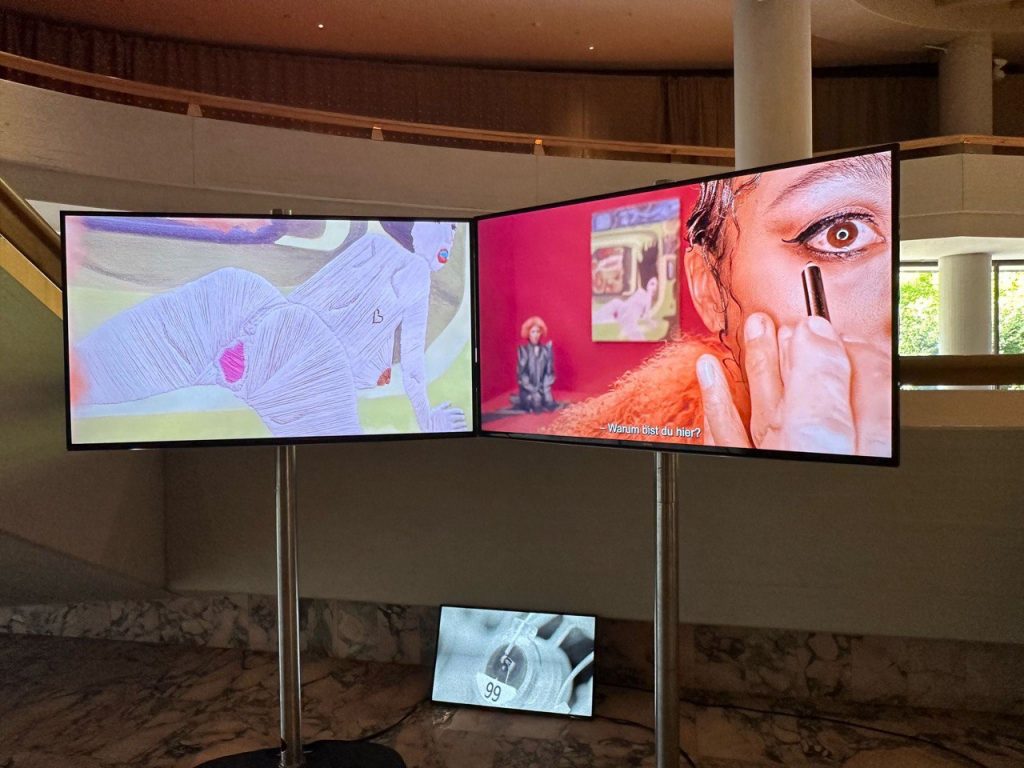
Video
Prologue
Lila-Zoé Krauß, [After her Destruction] Prologue, 2025
videomontage, Camera: Julia Thielke, 03’30, Color, Sound
Watch here
The [After her Destruction] Prologue serves as a pretext to the 2-channel videomontage.
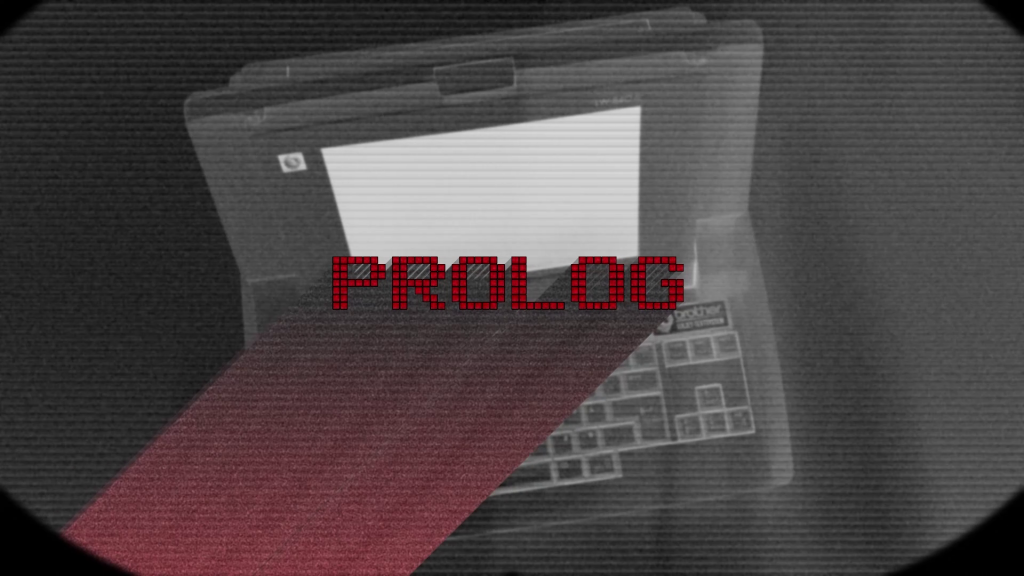
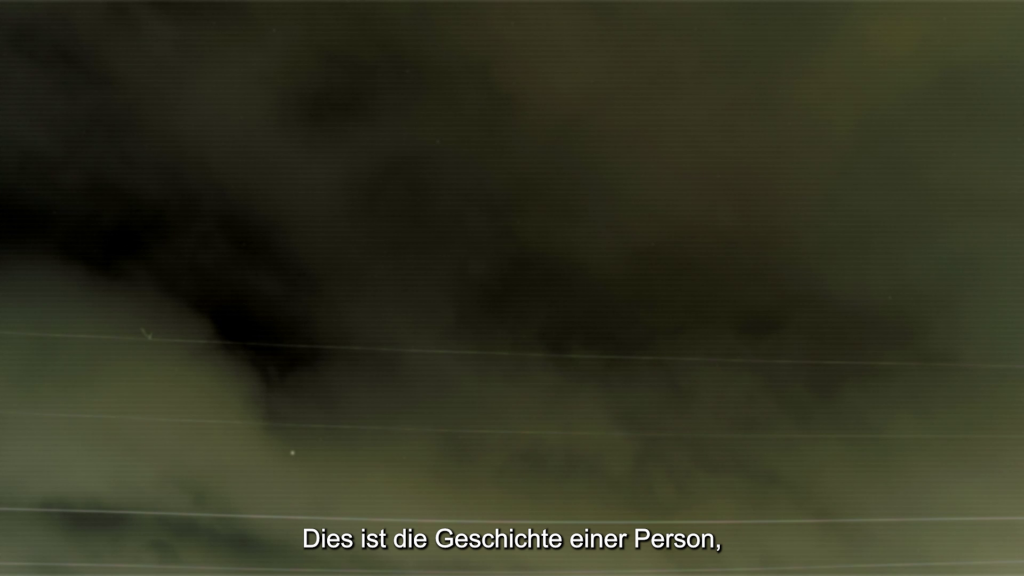
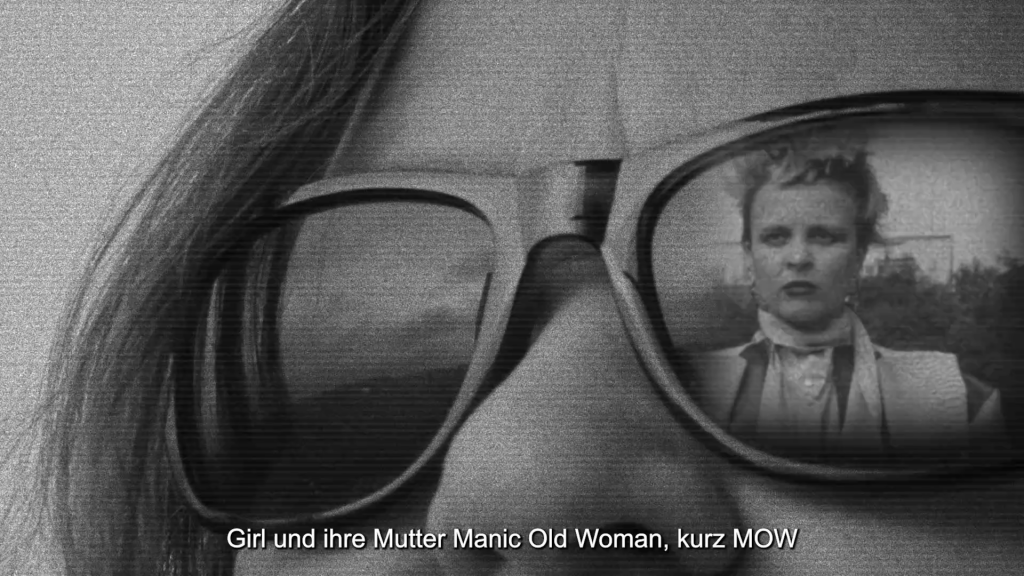
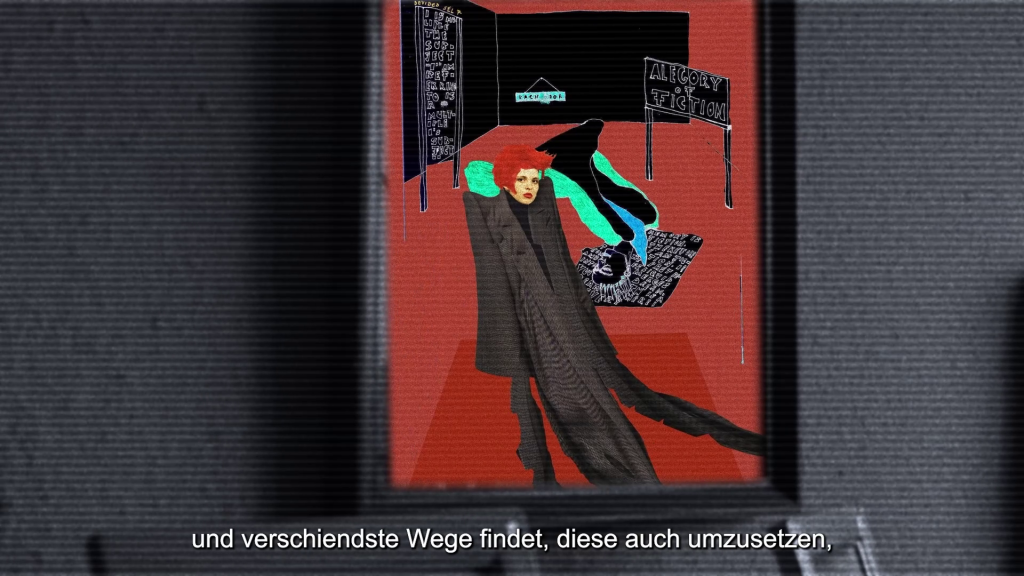
2-channel videomontage
Lila-Zoé Krauß, [After her Destruction], 2024
2-channel videomontage, Camera: Helena Wittmann, 48′, Color, Sound
Viewing link on request via inquiry@lilazoekrauss.com
The full opera can currently be viewed as a 2-channel video montage.














8 video chapters
Apparatus I: [The Art of Mind]
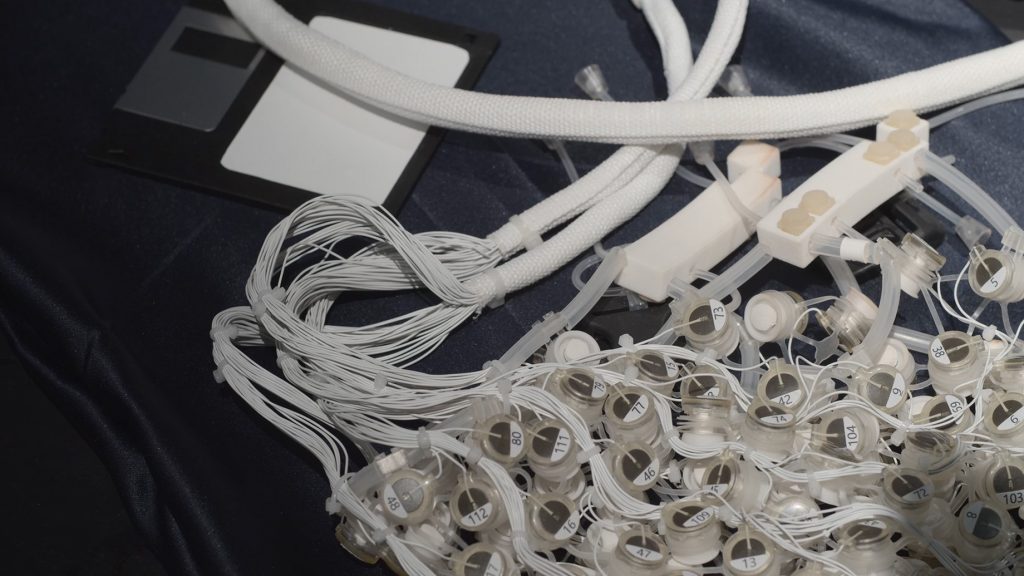
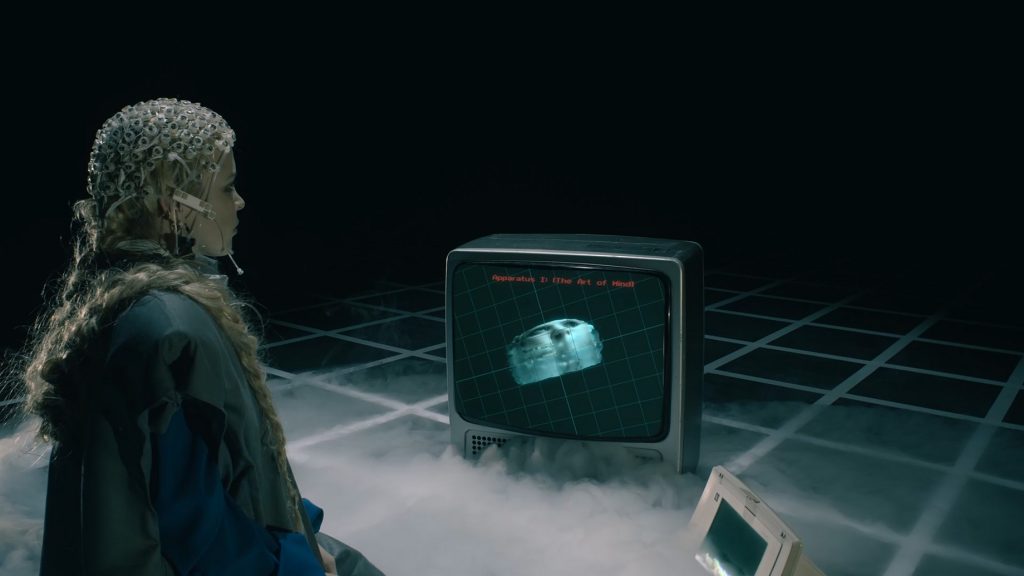
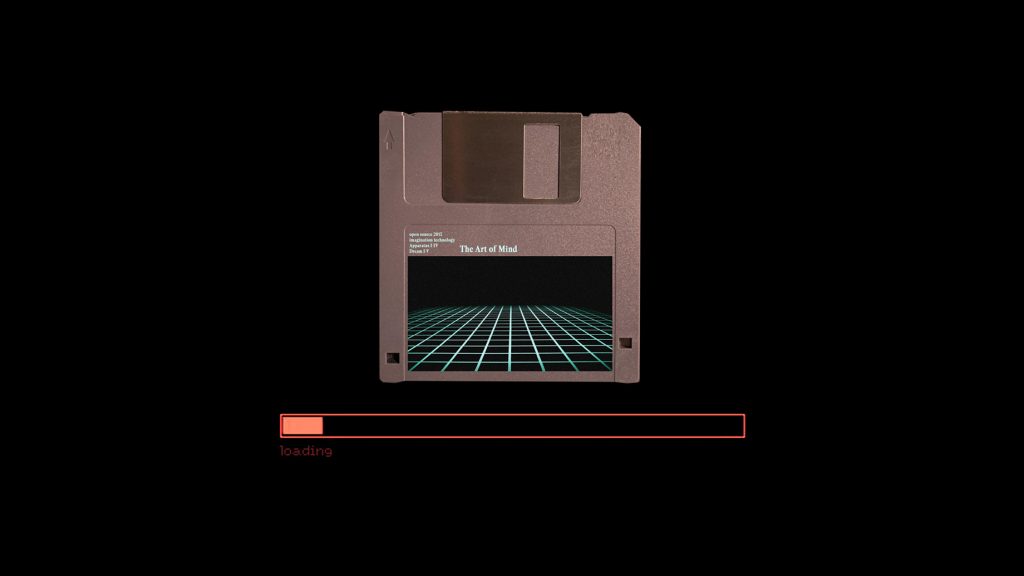
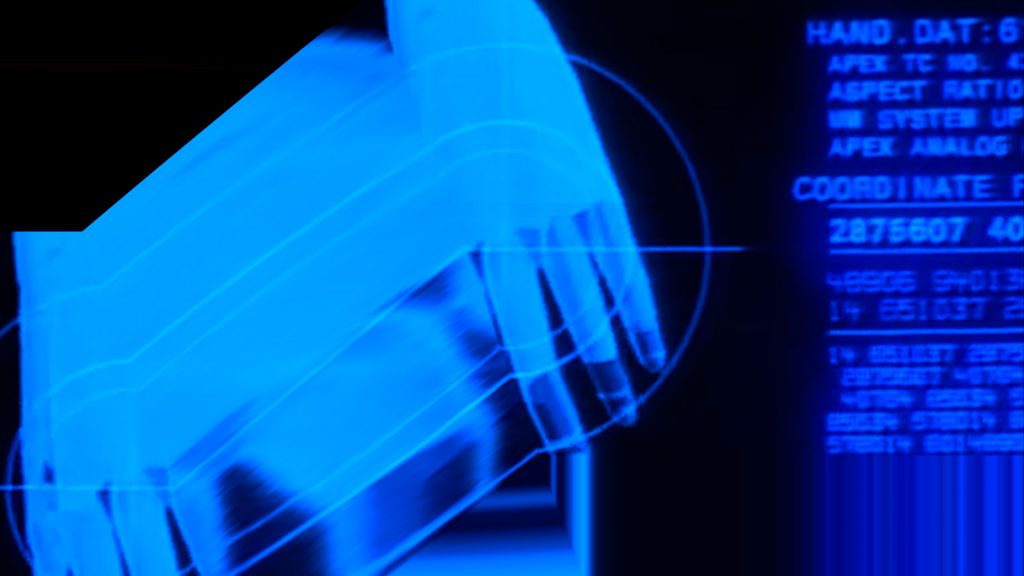
Dream I: [Matrix]
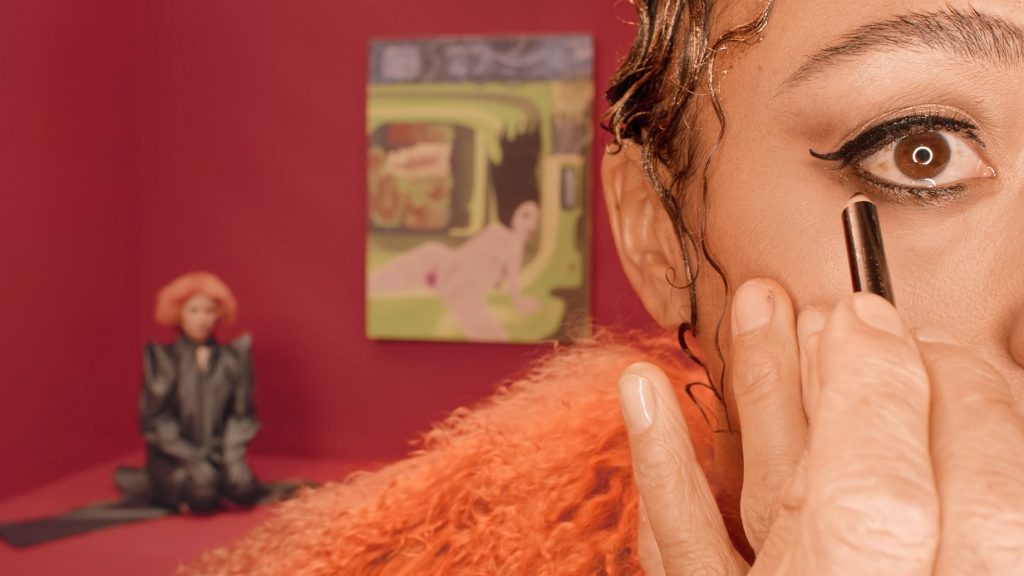


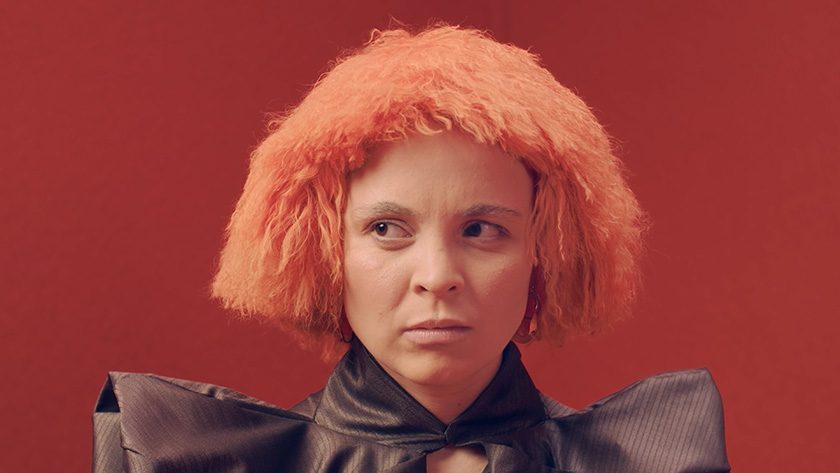
Apparatus II: [1994]
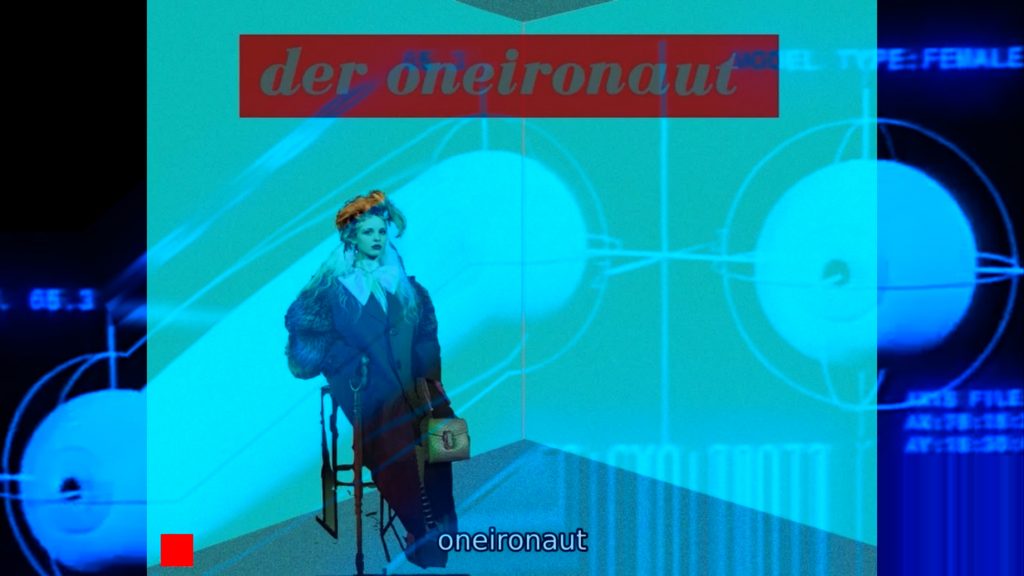

Dream II: [MOW]
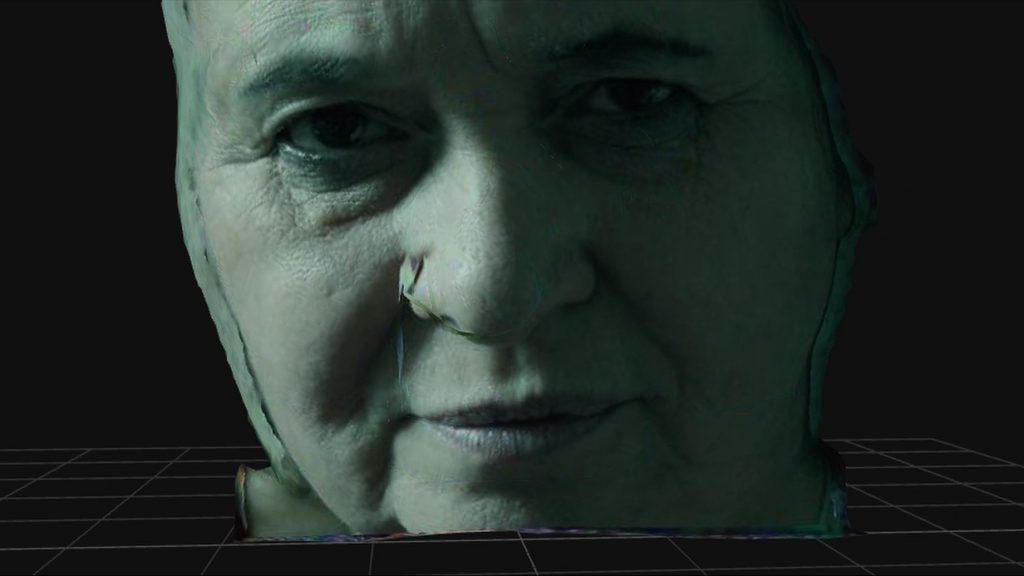
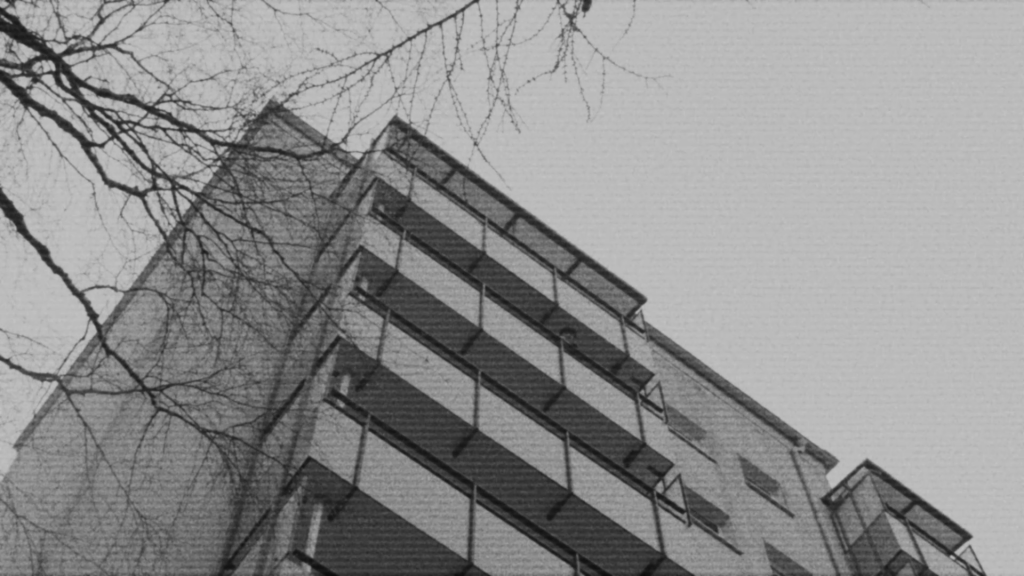
Apparatus III: [Superego]
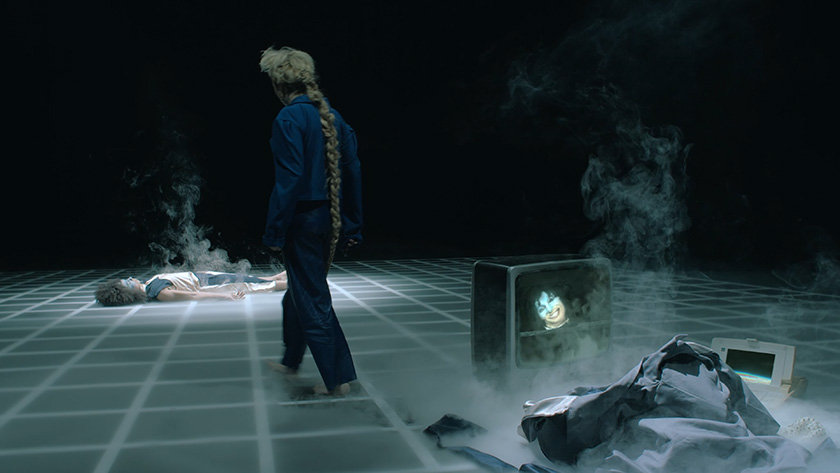
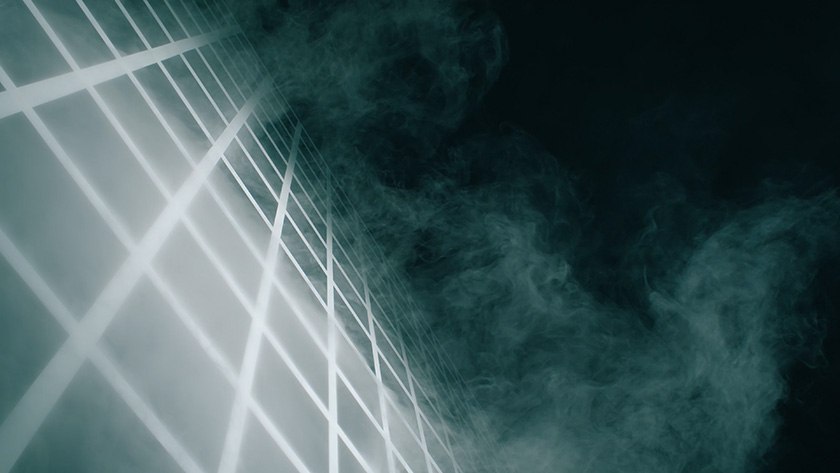

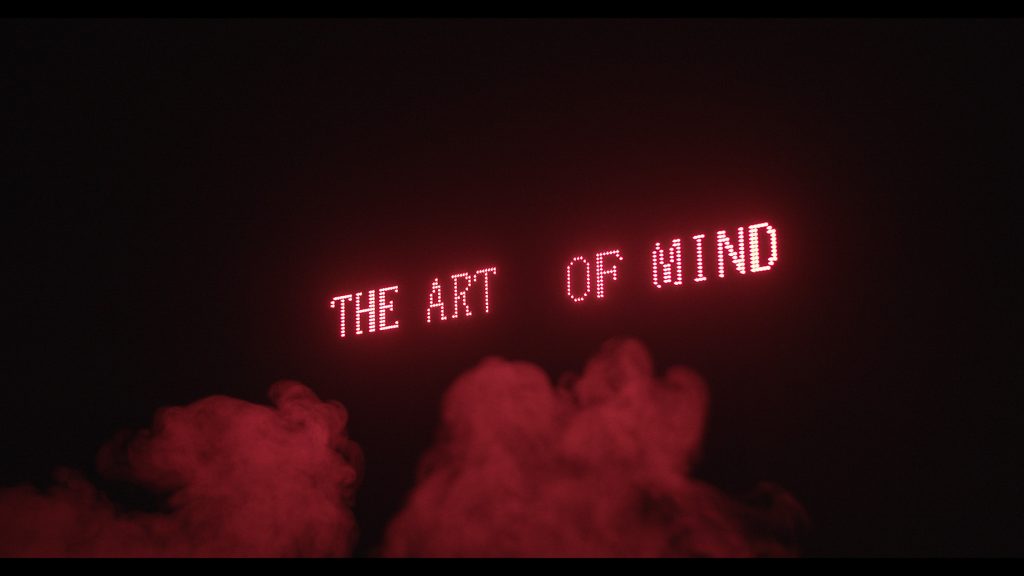
Dream III: [Ballad of Emotional Dependency]

Apparatus/ Dream IV: [Imagination]
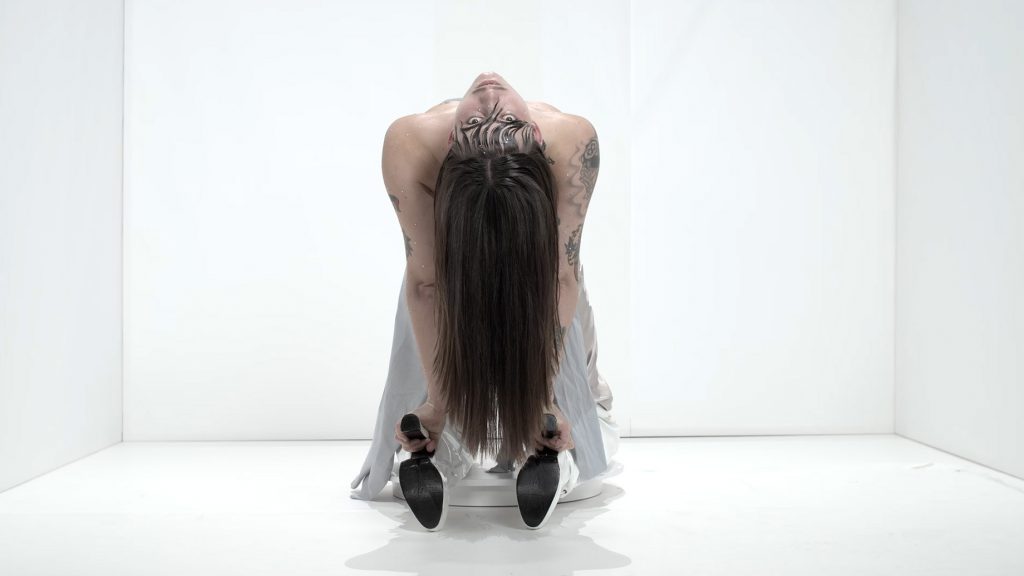
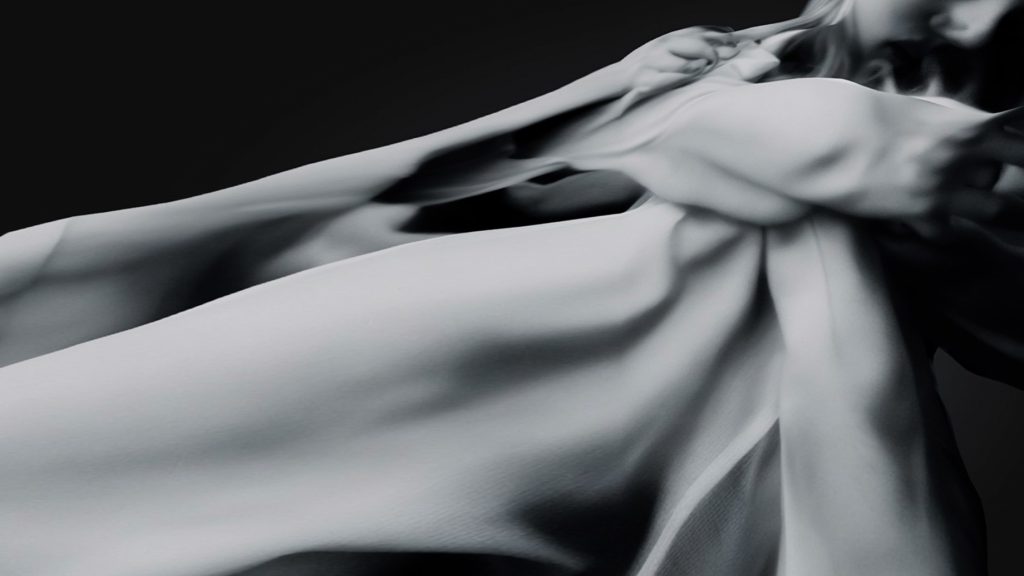
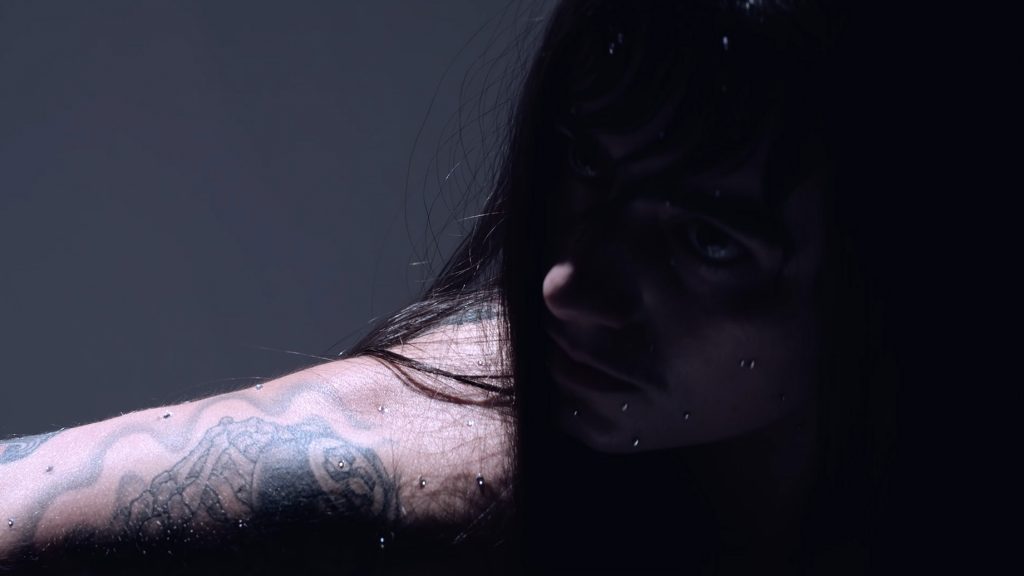

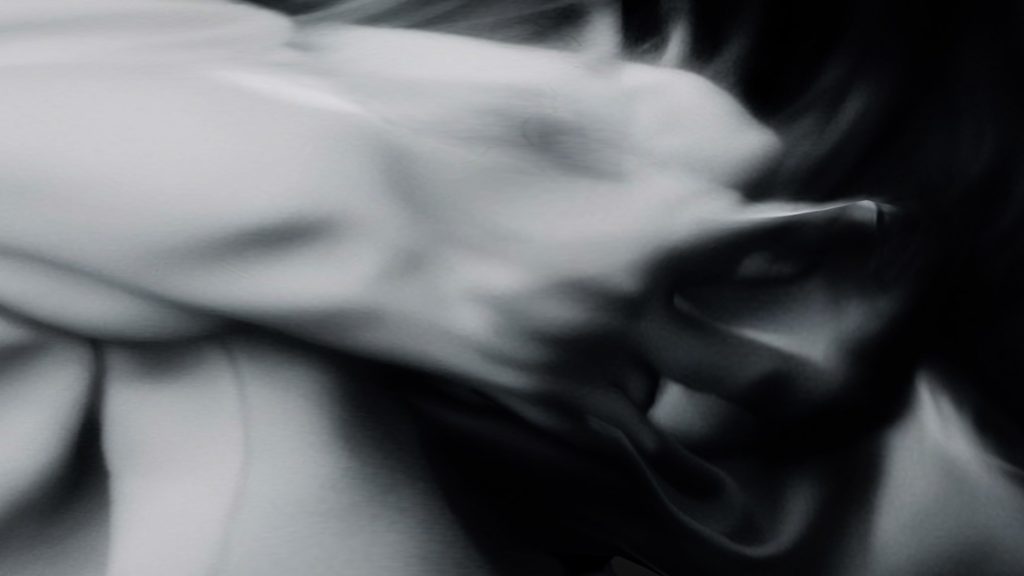
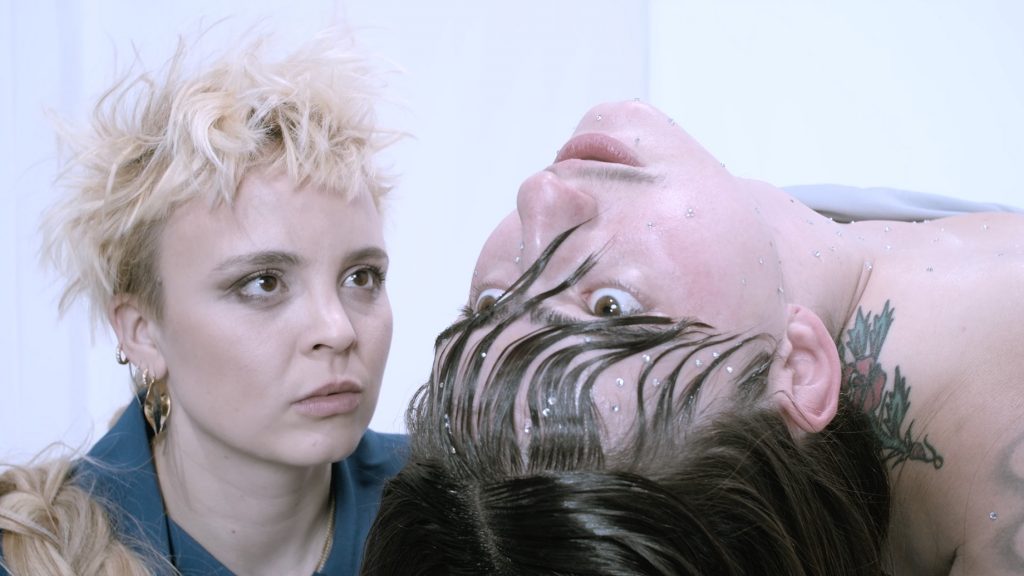
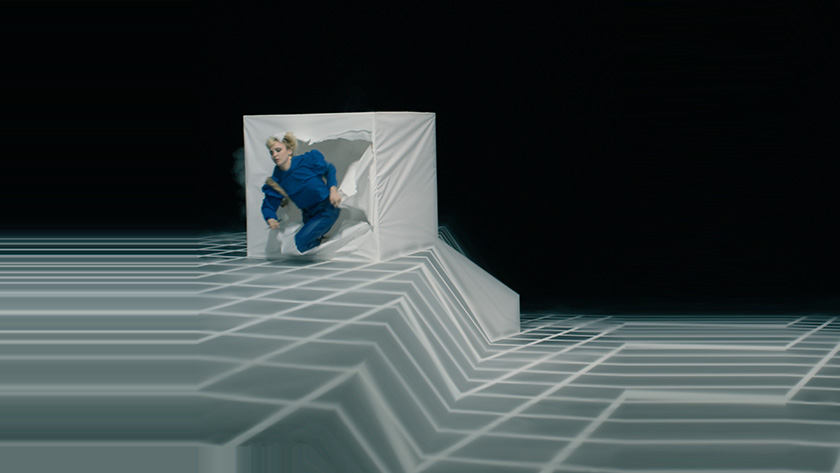
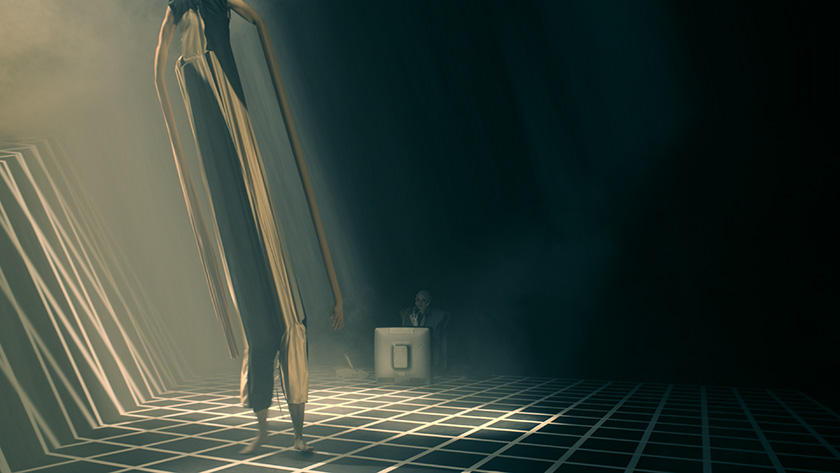
Dream V: [However, what remains is arranged by the Bombs!]
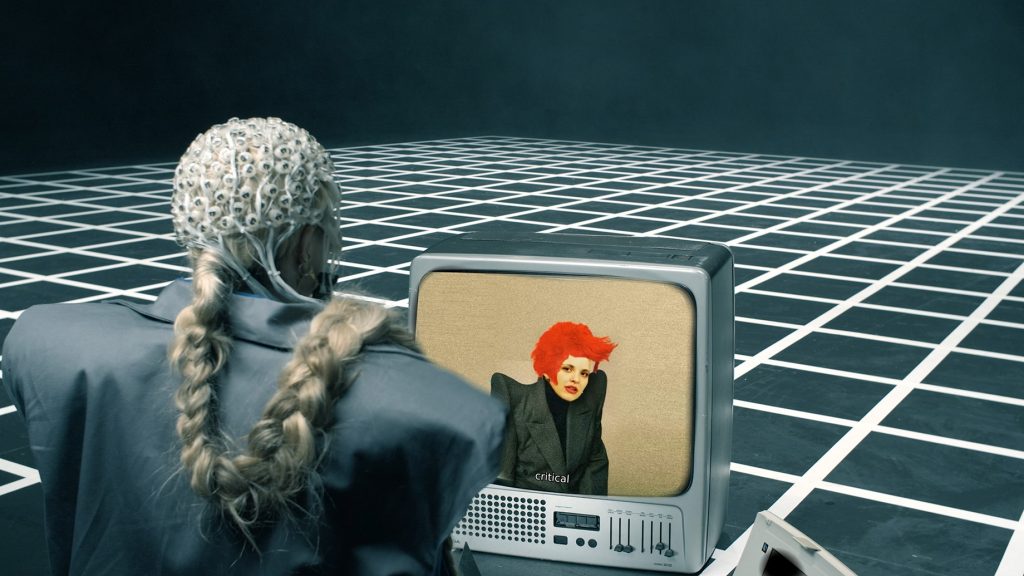
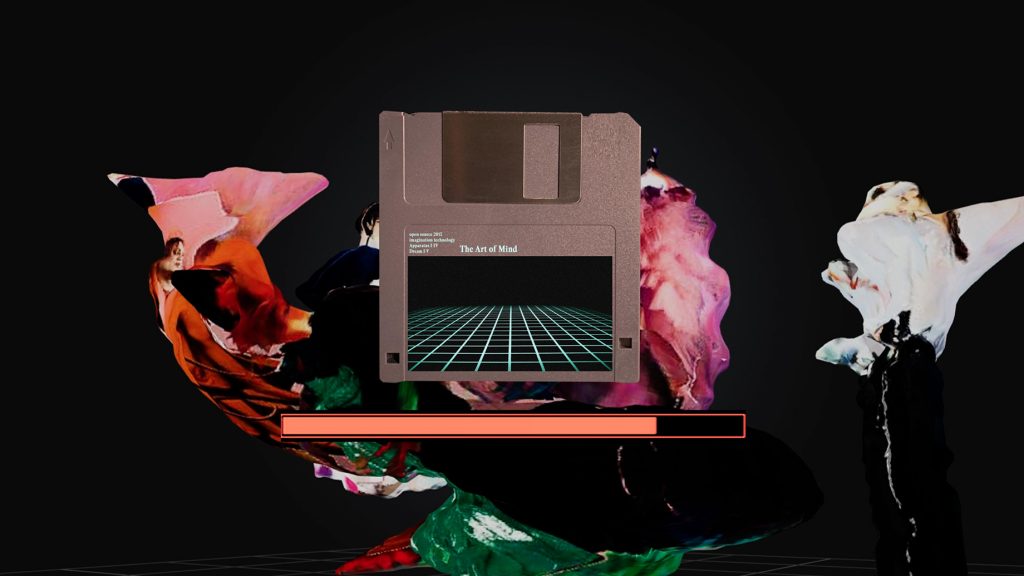






Live Performances
2023 – [After her Destruction] – Popkultur Festival – Berlin
Lila-Zoé Krauß
[After her Destruction], 2023
Multimedia live performance
Duration: 40 min
4.1 sound system
3 performers
2-video channel installation
Trailer
On September 1st 2023 [After her Destruction] was presented for the first time as a live performance in a pre-show at Popkultur Festival Berlin, with Lexi Calimero Schnäbele and Benson A‘kuiye. The 40-minute show was performed three times in total.
(Photo Credits: Julia Boxxler)
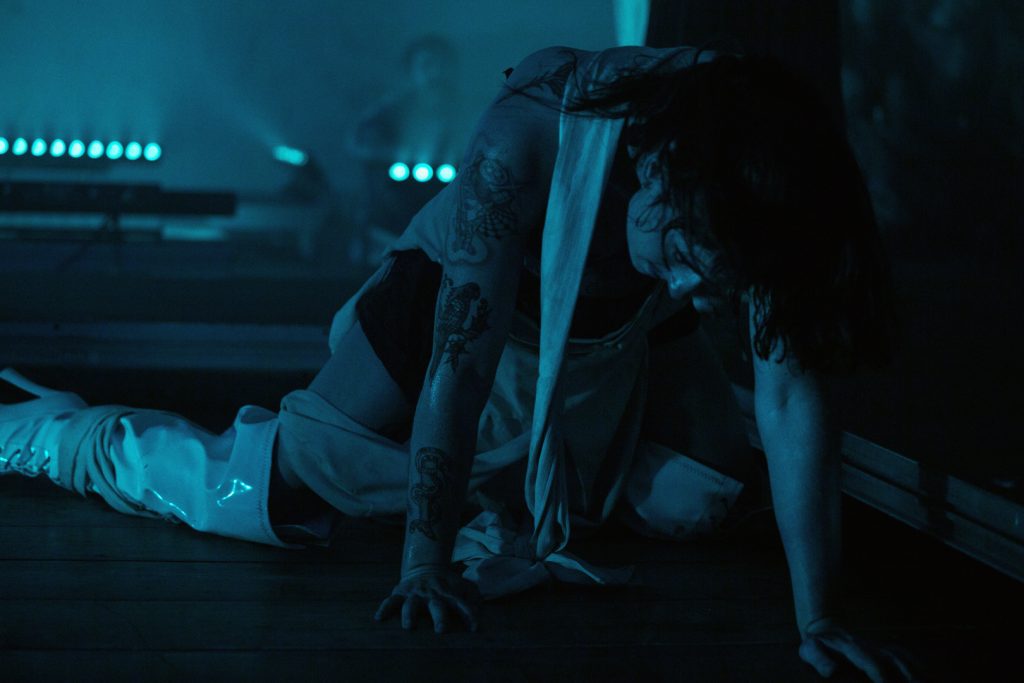


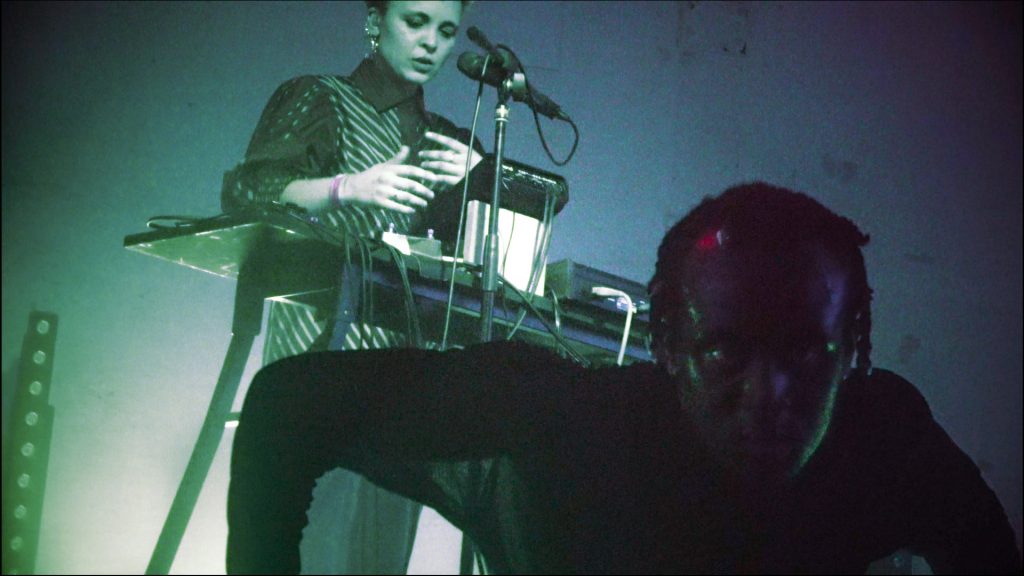
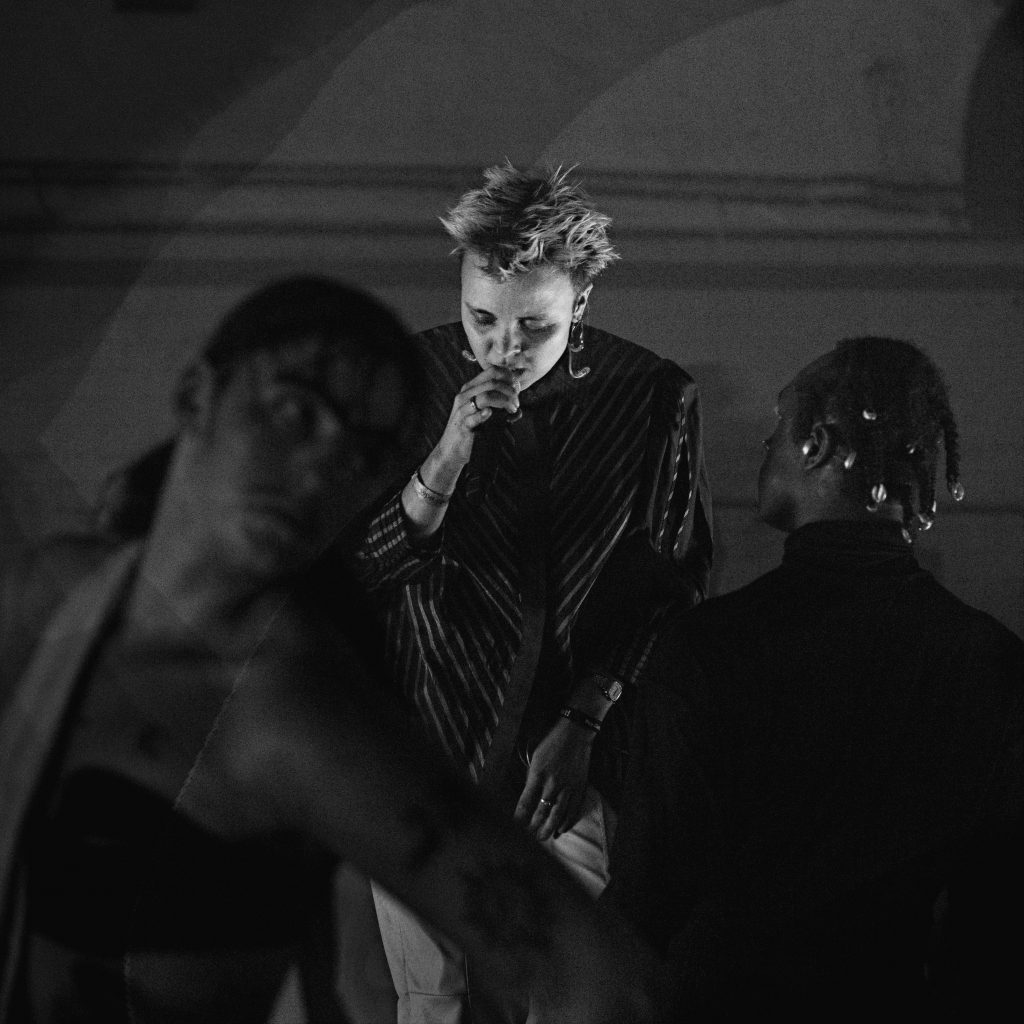
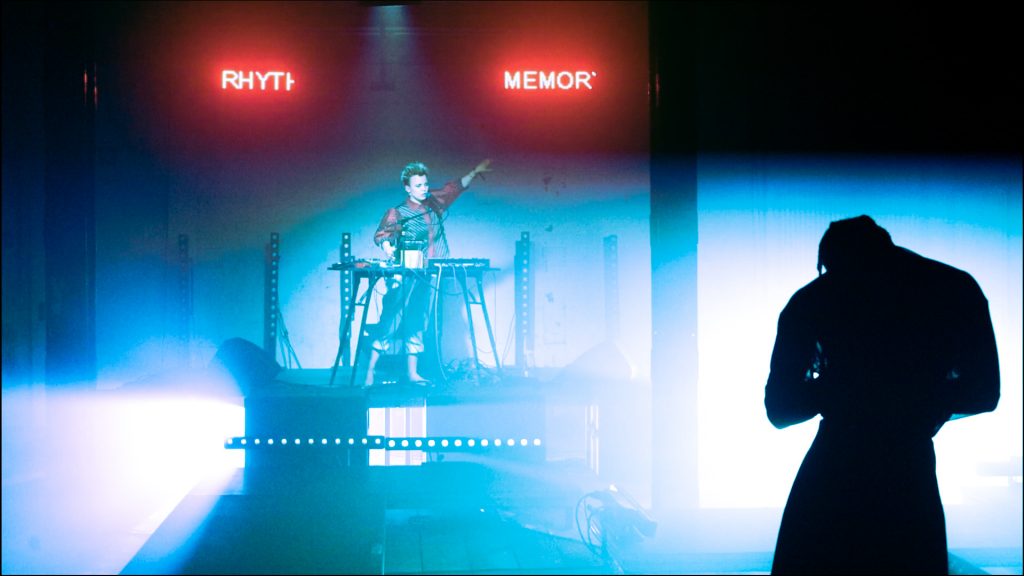
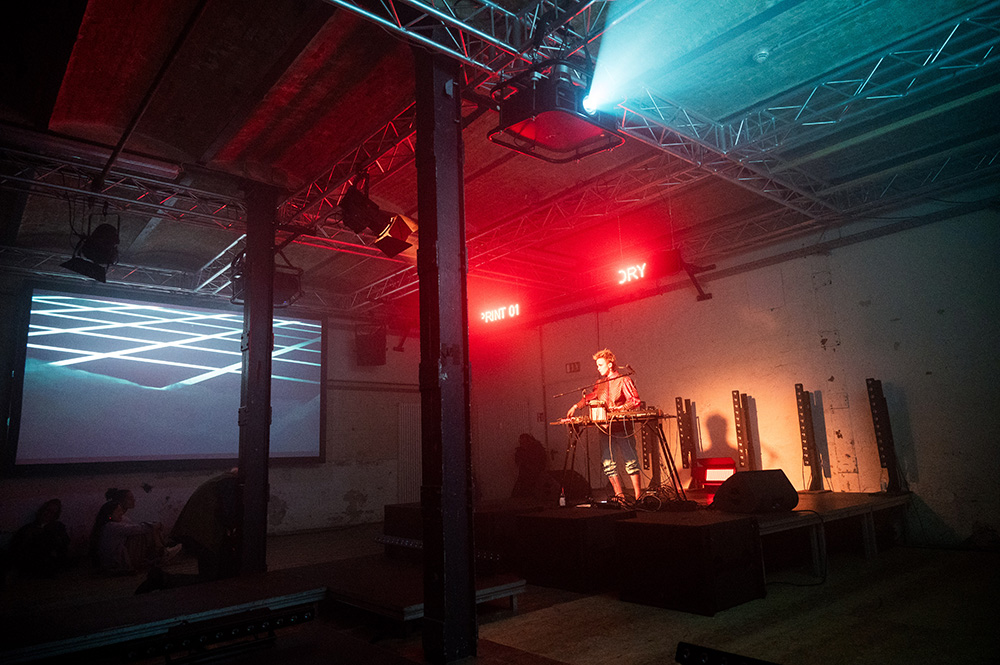


2023 – [After her Destruction] – Forum Stadtpark – Graz
Lila-Zoé Krauß
[After her Destruction], 2023
Multimedia live performance
Duration: 50 min
4.1 sound system
single channel video
solo show
On September 8th 2023 [After her Destruction] was performed as an audiovisual solo performance at Forum Stadtpark, Graz.
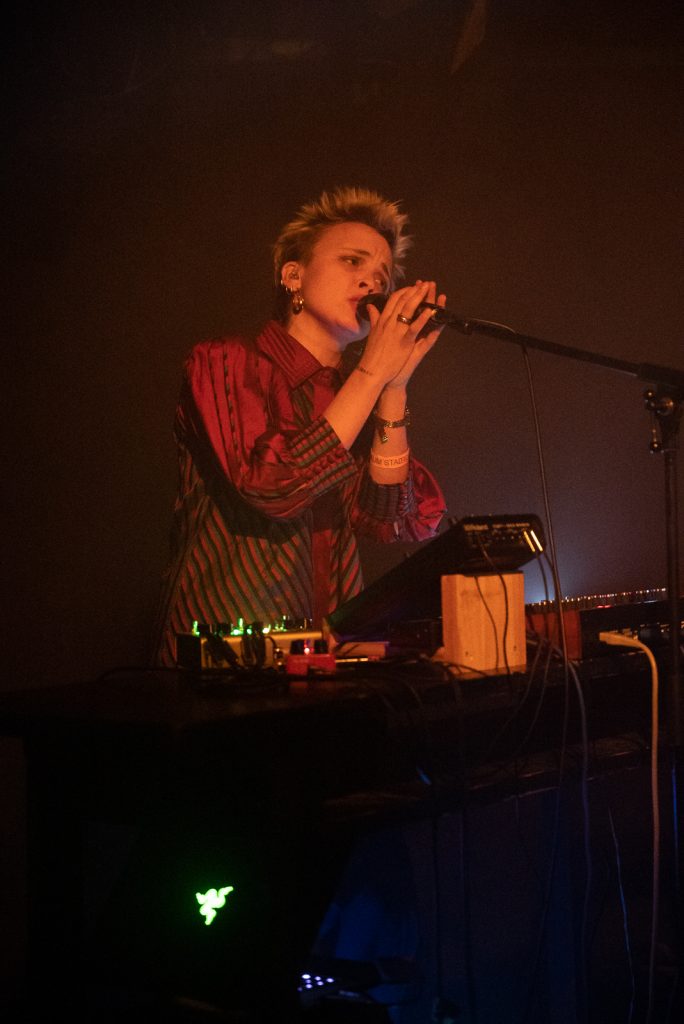


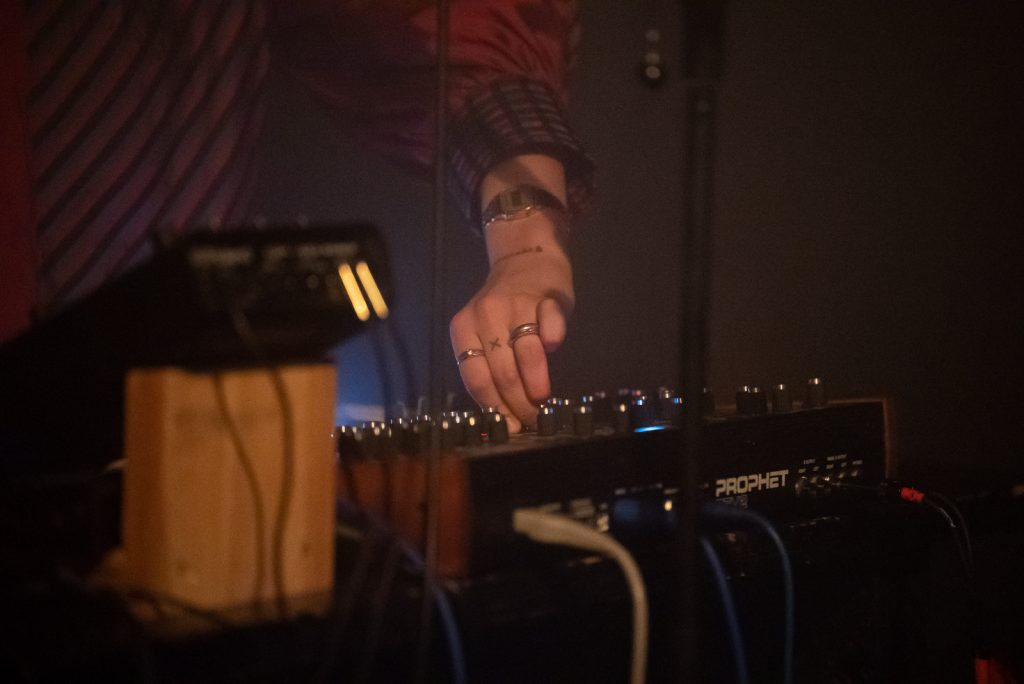
2023 – [After her Destruction] – Desertshore Festival – Volkstheater Vienna
Lila-Zoé Krauß
[After her Destruction], 2023
Multimedia live performance
Duration: 40 min
2.1 sound system
single channel video
solo show
On December 9th 2023 [After her Destruction] was performed as an audiovisual solo performance at Volkstheater Wien, two times 40 minutes each.
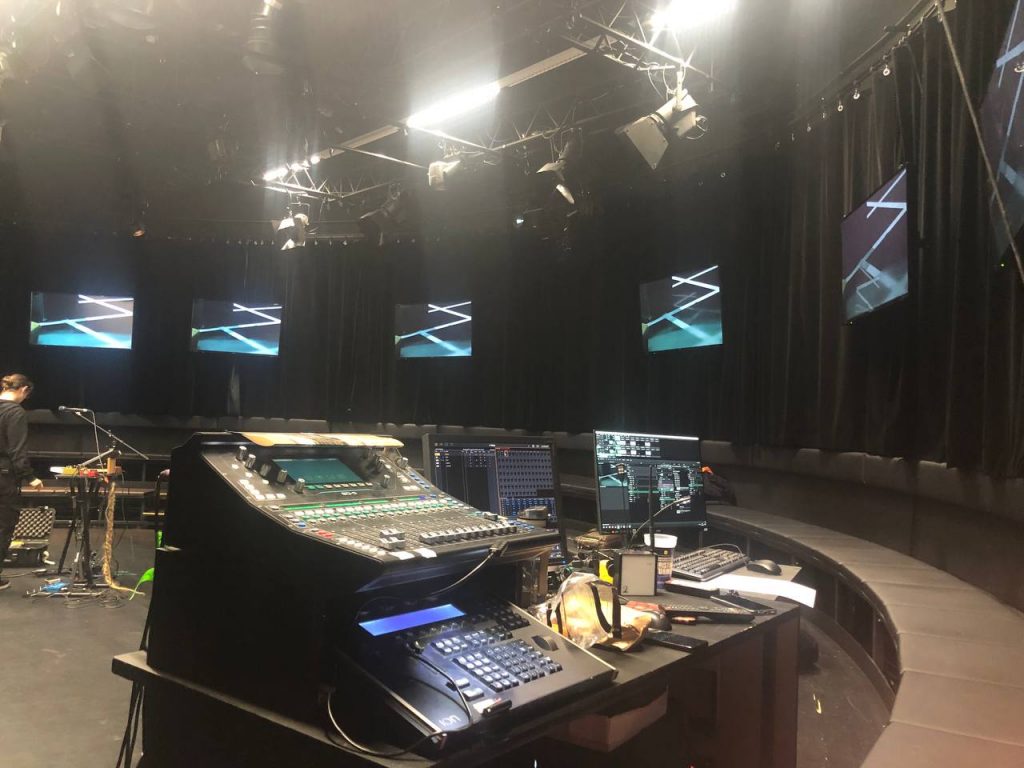
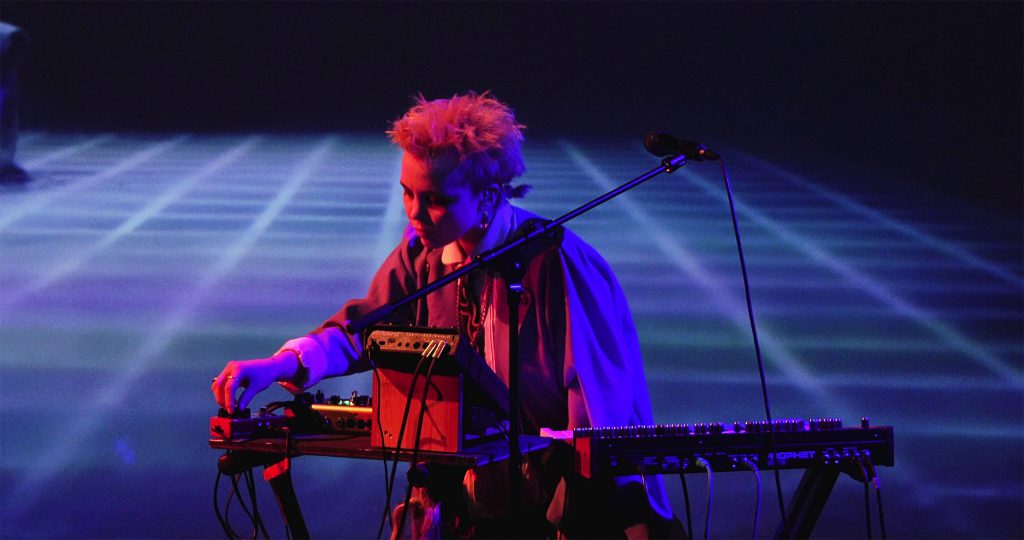
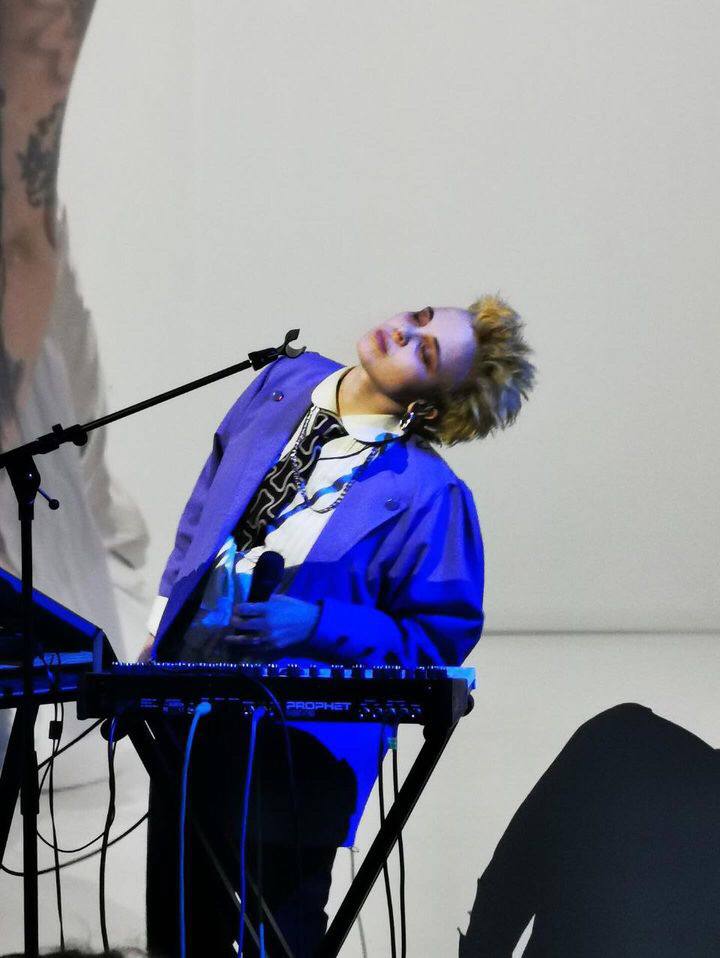
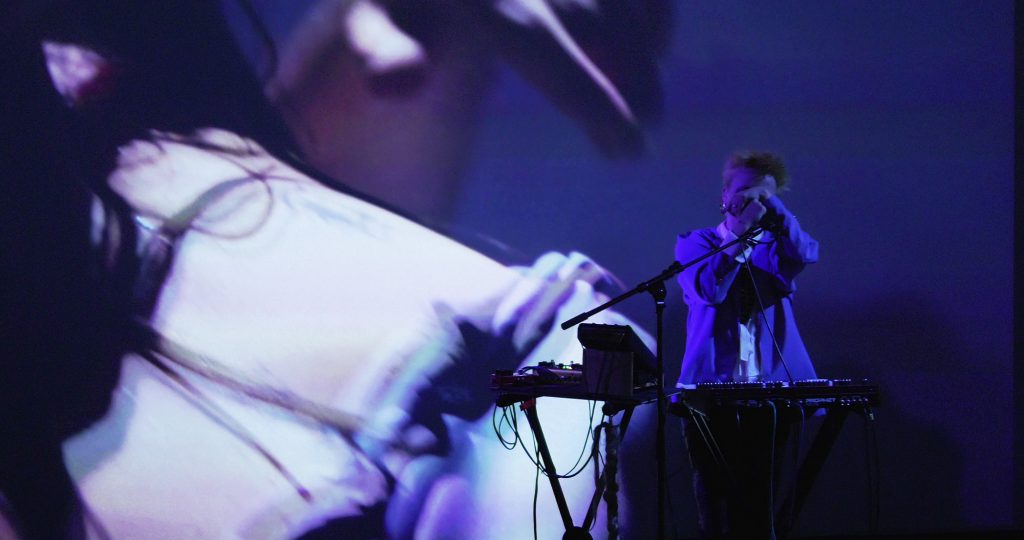
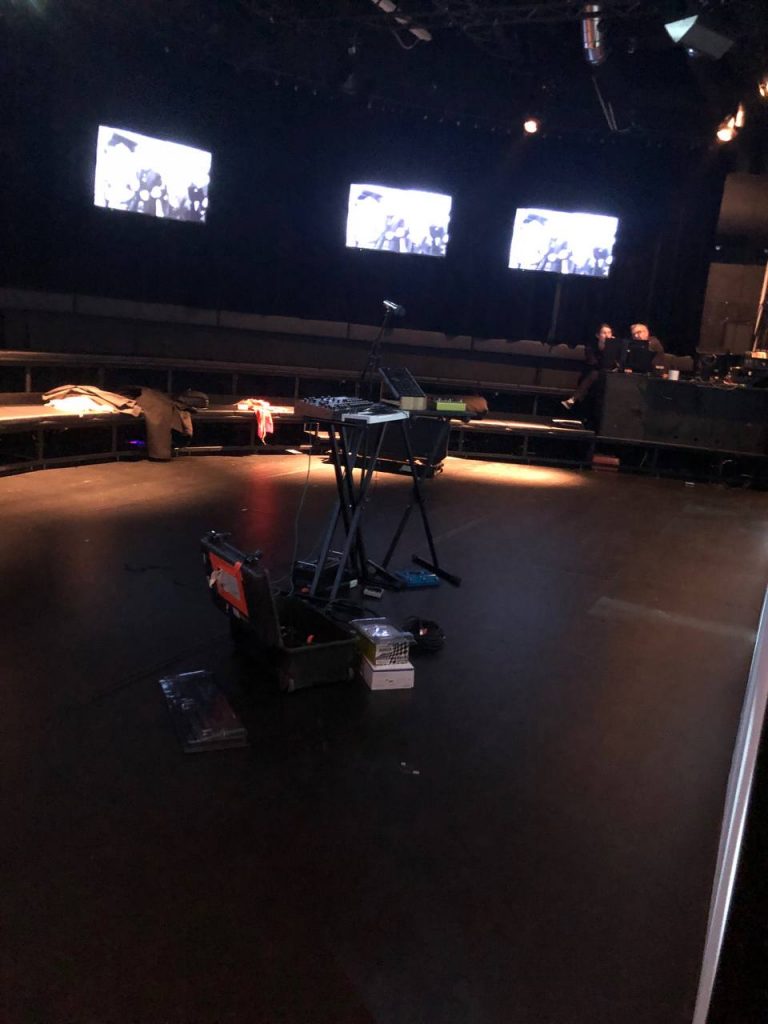
2024 – [After her Destruction] – Kampnagel Hamburg
Lila-Zoé Krauß
[After her Destruction], 2024
Multimedia live performance
Duration: 50 min
4.1 sound system
single channel video
3 performers
On May 25th, Don Jegosah, Anto López Espinosa and Lila-Zoé Krauß presented a performance collage at Kampnagel Hamburg.
Framed by the opera’s music, the three artists entered into a performative conversation between poetry, sound, language, drag and voice to open up a space in which emotions, memories, vulnerability and queer love find expression.


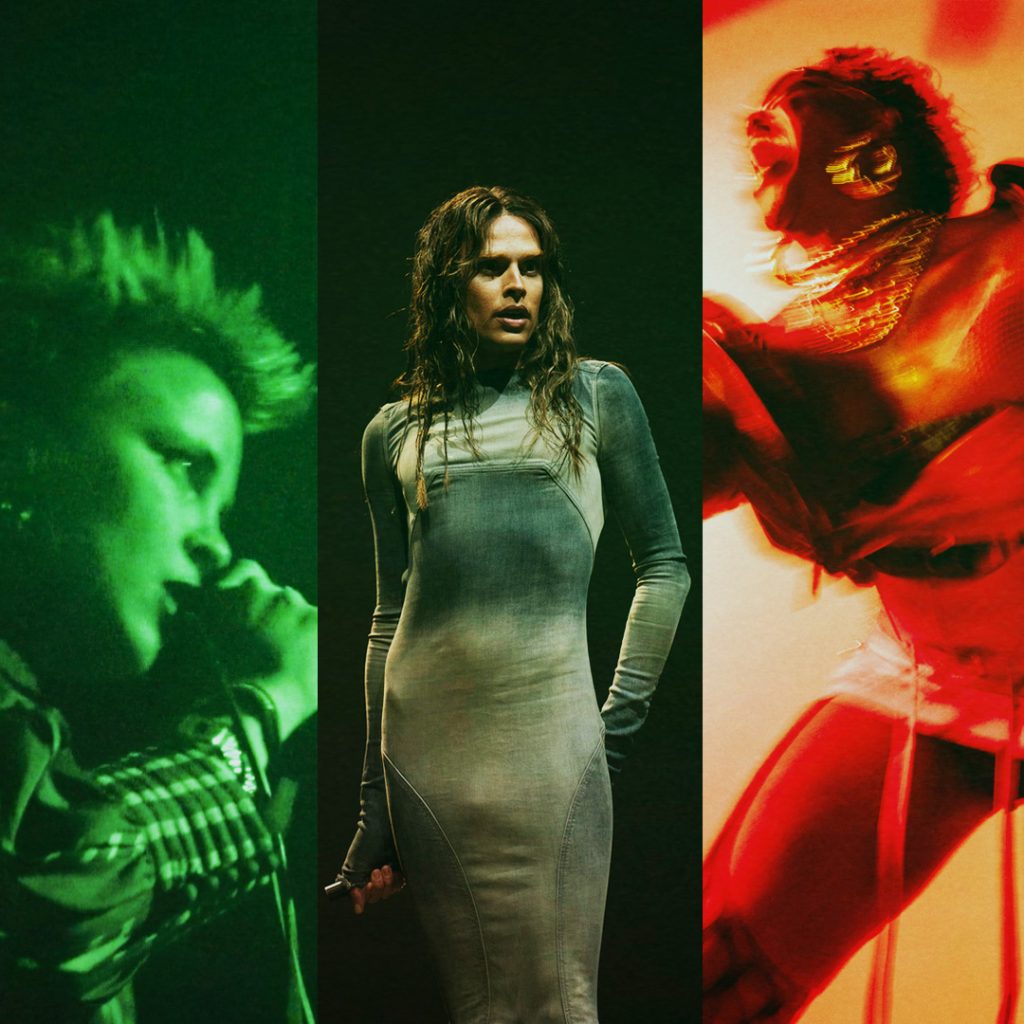


2024 – Apparatus III: [Superego] – Secession – Vienna
Lila-Zoé Krauß
[After her Destruction], 2024
Live performance
Duration: 30 min
4.1 sound system
2 performers
Tralier
Apparatus III: [Superego] is a chapter of [After her Destruction]. On July 9th it was performed by Ophelia Young and Lila-Zoé Krauß at Tuesday@Secessions.
Social norms are negotiated between external attribution and self-description. In this ‘apparatus’, identifications are created that (sometimes) forcibly inscribe themselves into the body and the psyche. Procedures such as reintegration into the work system after a psychiatric stay, an application for asylum or the gender entry on the birth certificate illustrate that norms are not given, but are permanently produced. The body is not only a political archive of memory, but also the vehicle for the performance of autonomy and subjugation. Through choreographic arrangements and improvisations, Ophelia Young and Lila-Zoé Krauß enter into a dialoge of movement and sound. Repetitions, disjunctions, synchronizations – understood as the practice of remembering (always differently) – are the landscape in which they search for temporary, autonomous zones.
Foto Credit: Filmstill, Camera: Mara Chavez
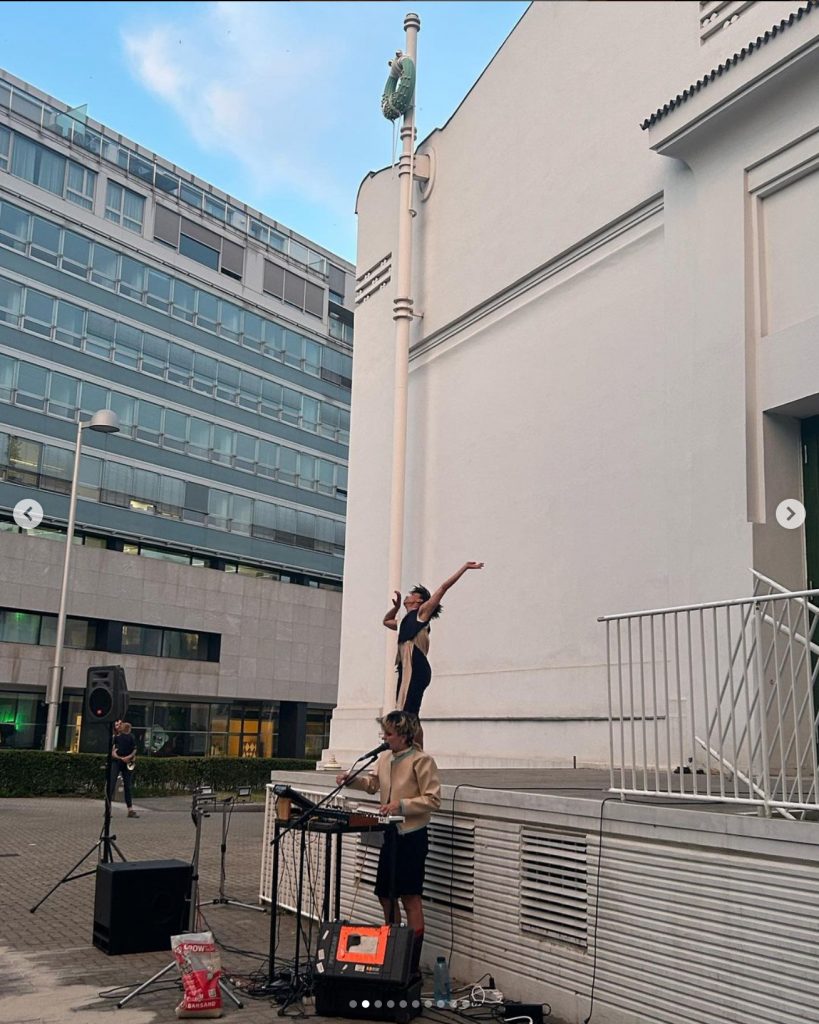

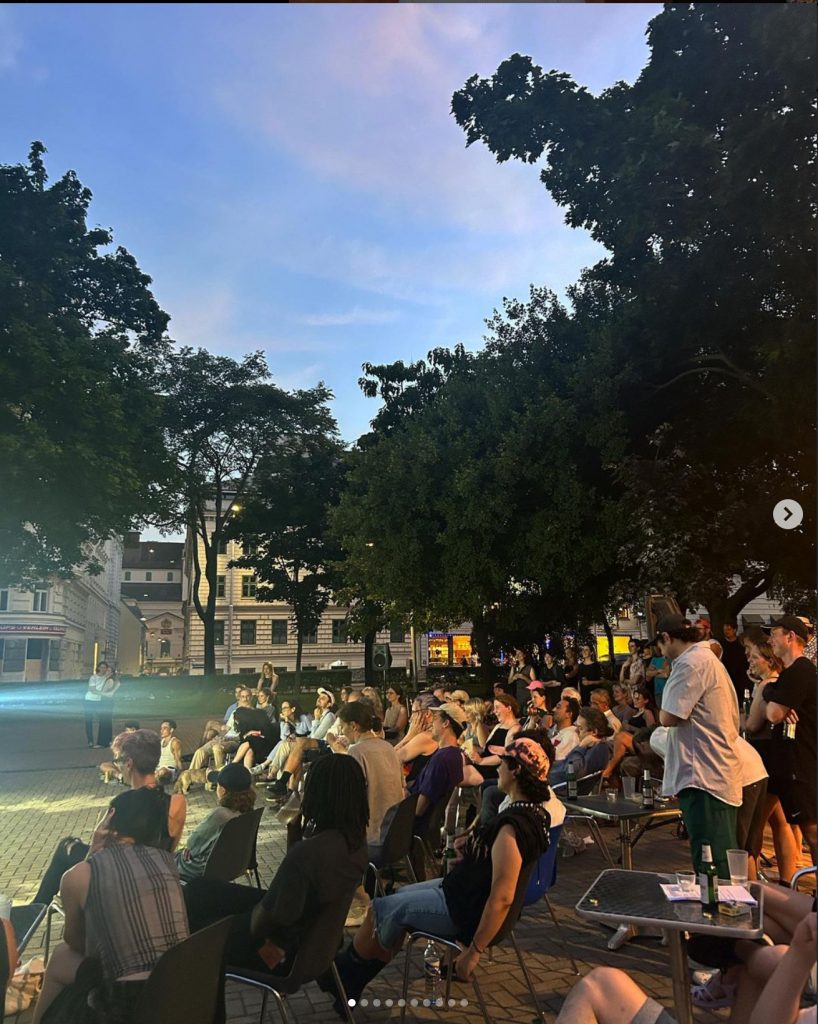
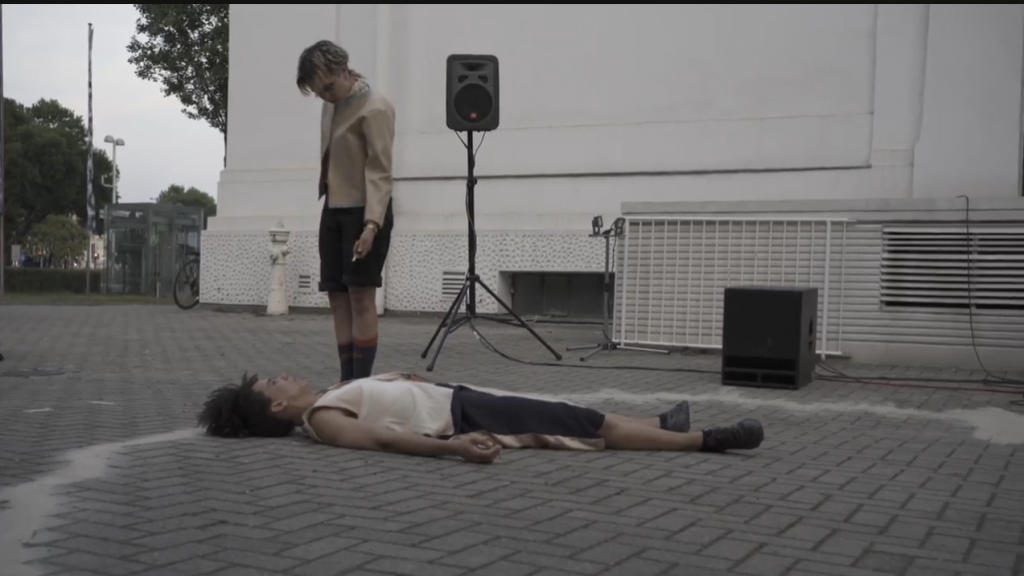
2024 – [After her Destruction] – Finissage – Kunsthaus Hamburg
Lila-Zoé Krauß
[After her Destruction], 2024
Live performance
Duration: 30 min
20.1 surround sound
5 performers
Video documentation
“Sometimes, when I dream, the dream seems to be real. My imagination—I can’t stop it!“ (Excerpt from Lila-Zoé Krauß, [After her Destruction], 2024)
On 27th July 2024, five figures whom Girl encounters on her journey appear in the middle of the exhibition hall: the Lady’s Lover (Sibylle Peters), the Superego (Ophelia Young), two members of the Choir of Mutants (Rebecca de Toro, Don Jegosah) and Girl herself. Through choreographic formations and improvisation, a fragmentary conversation is created between words, movement, song and sound.
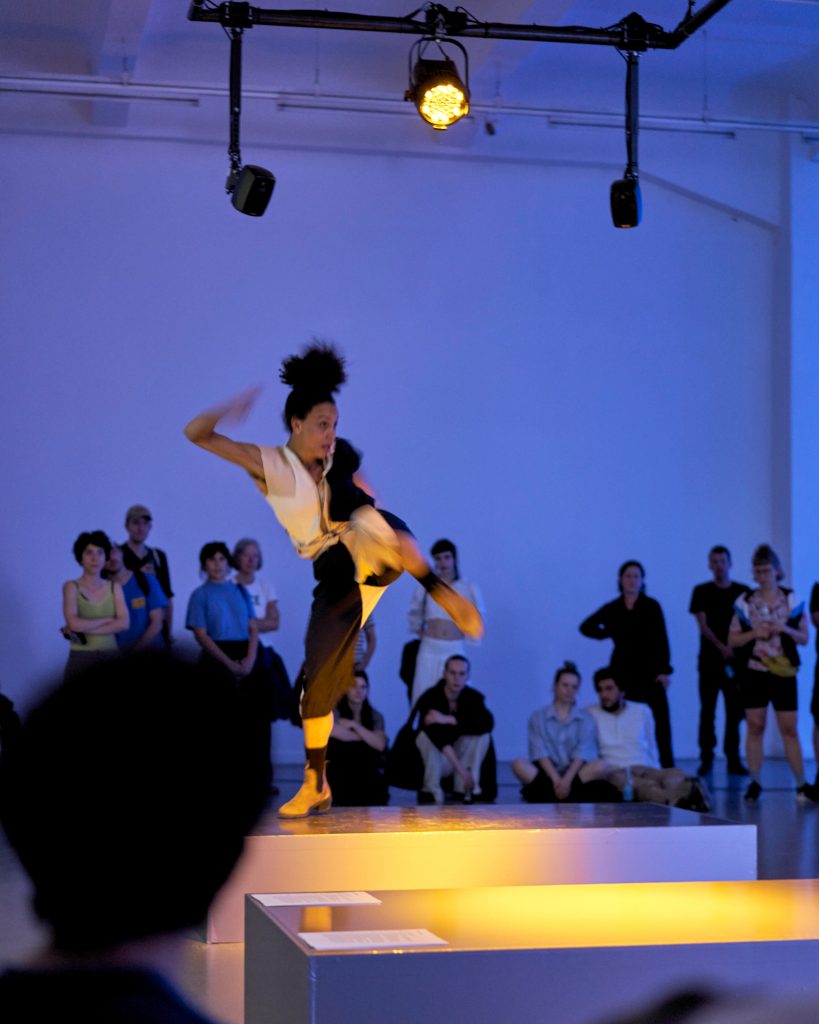
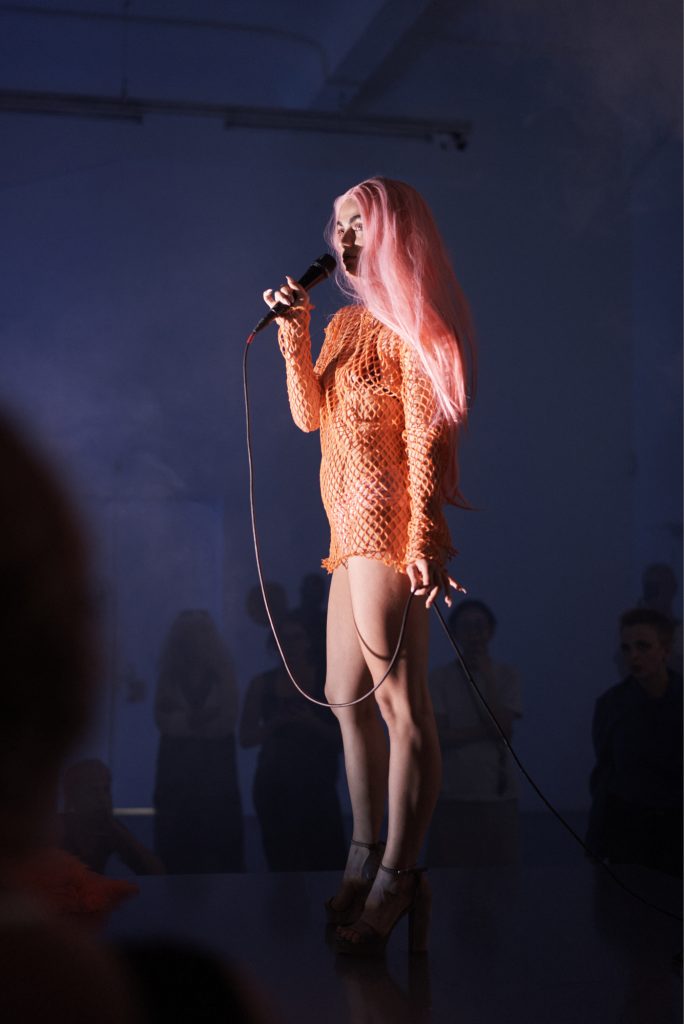
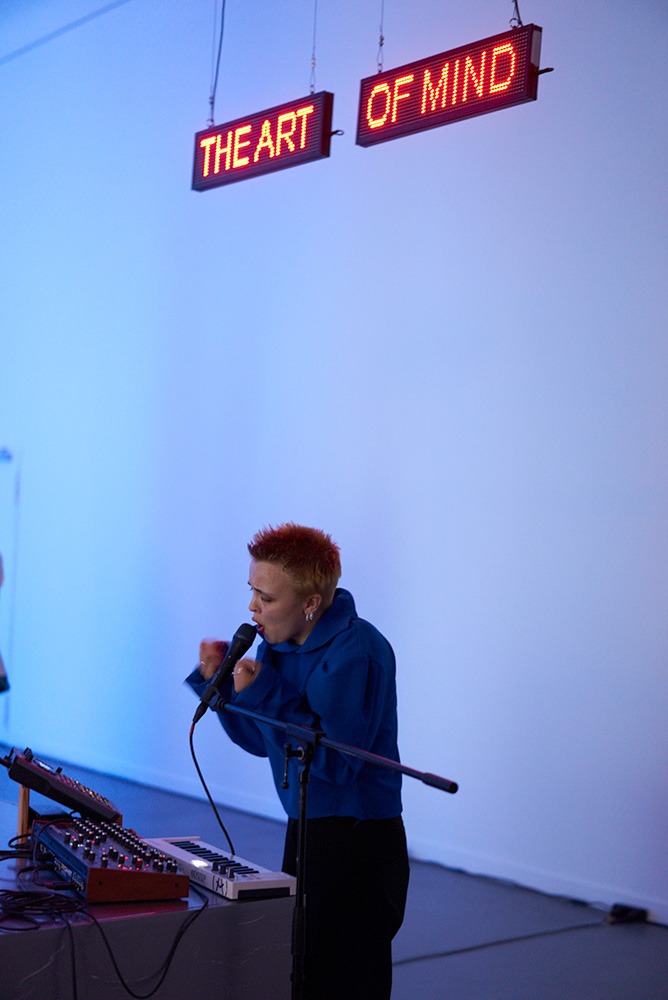
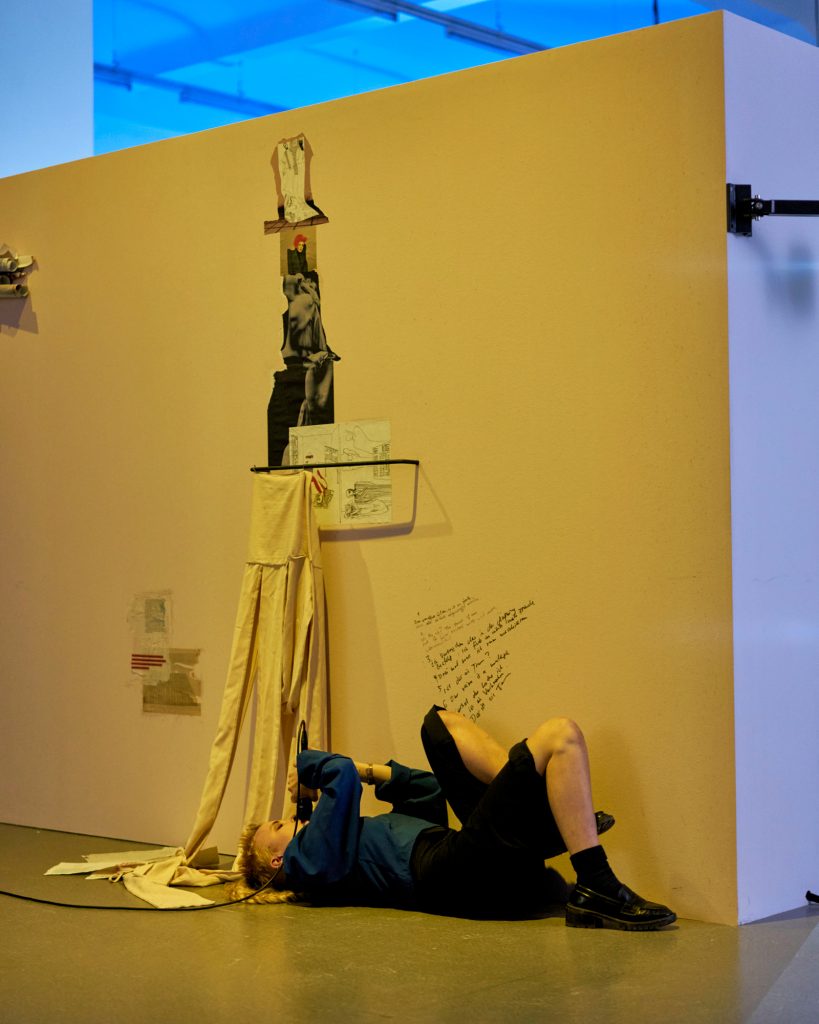
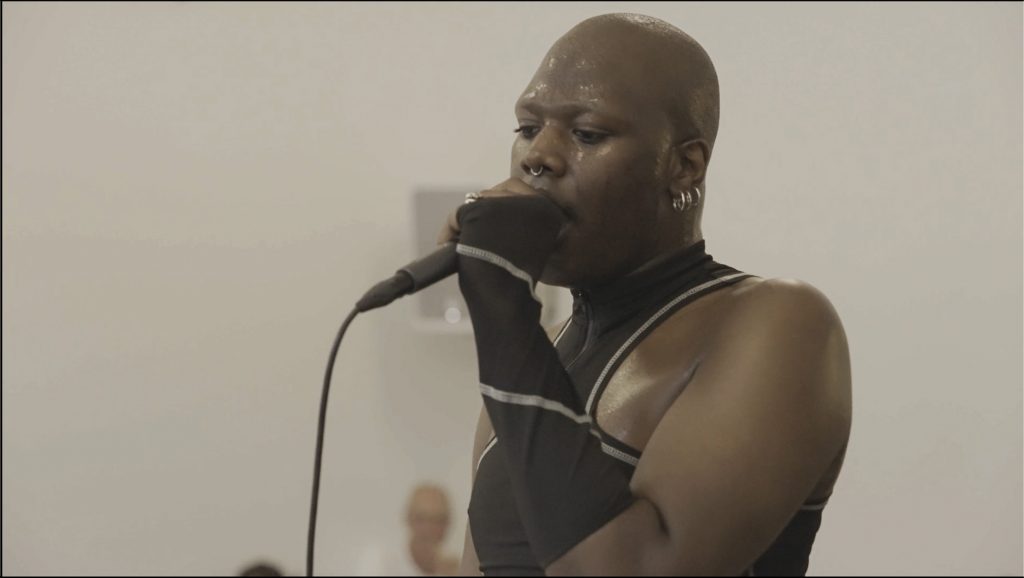
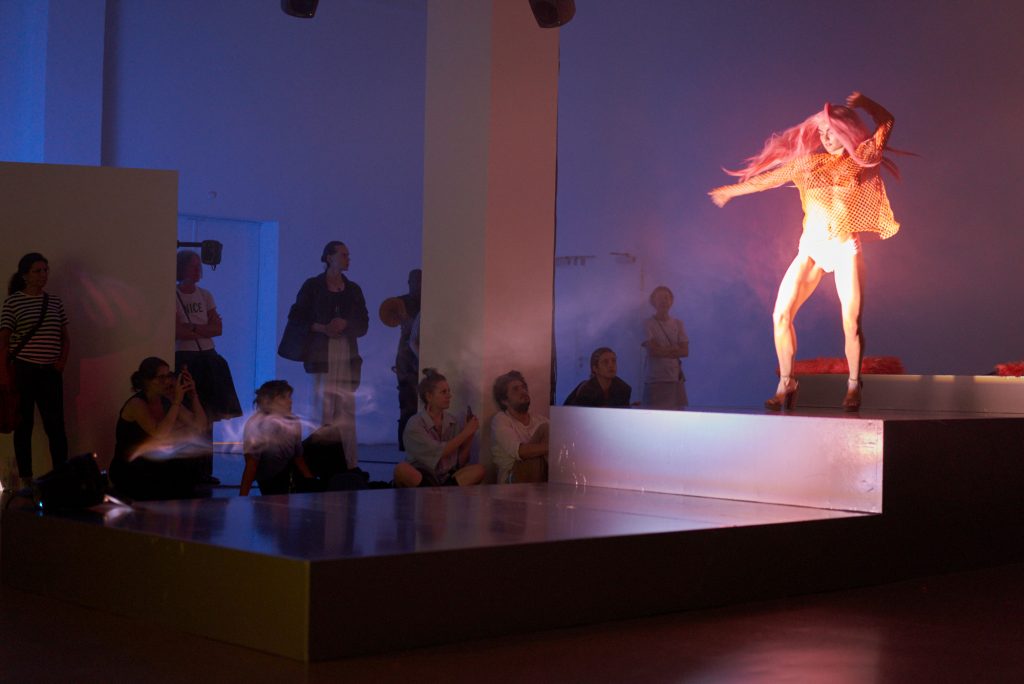
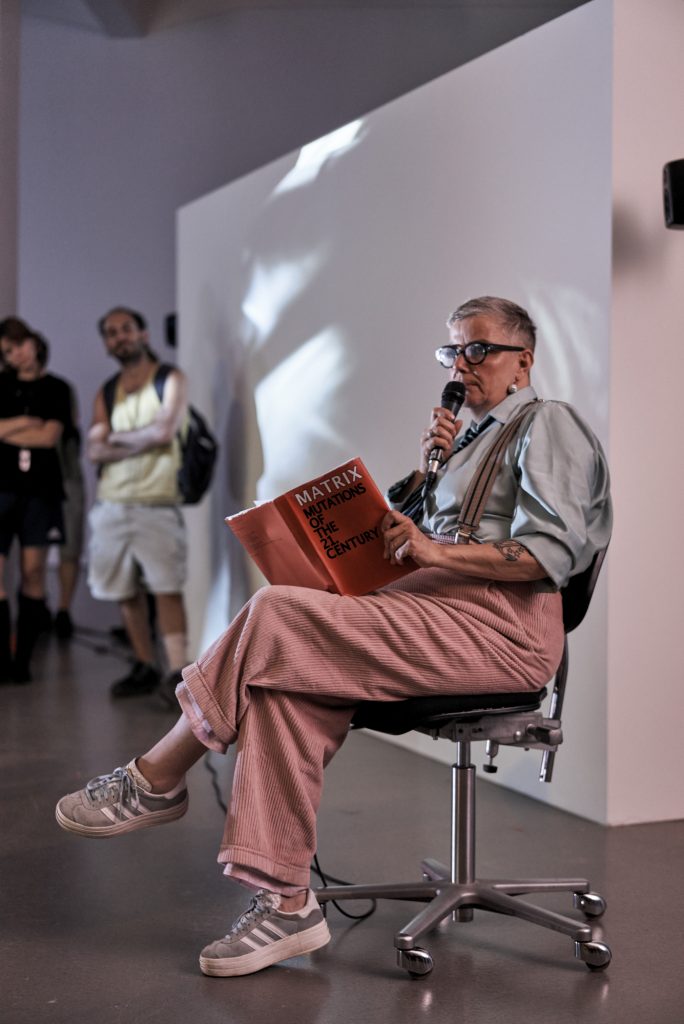
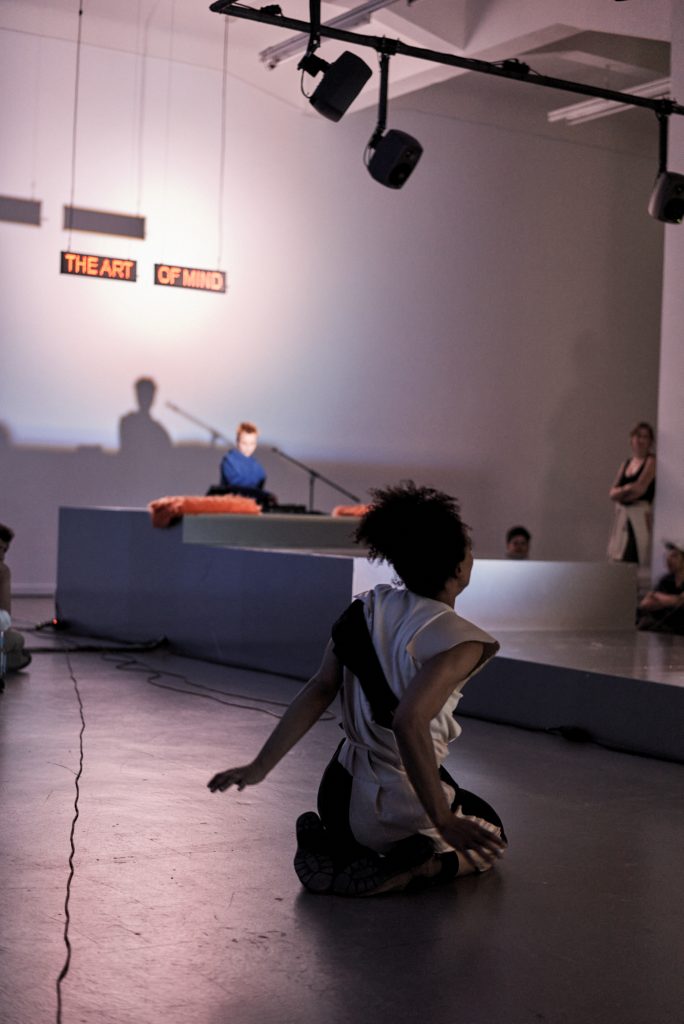
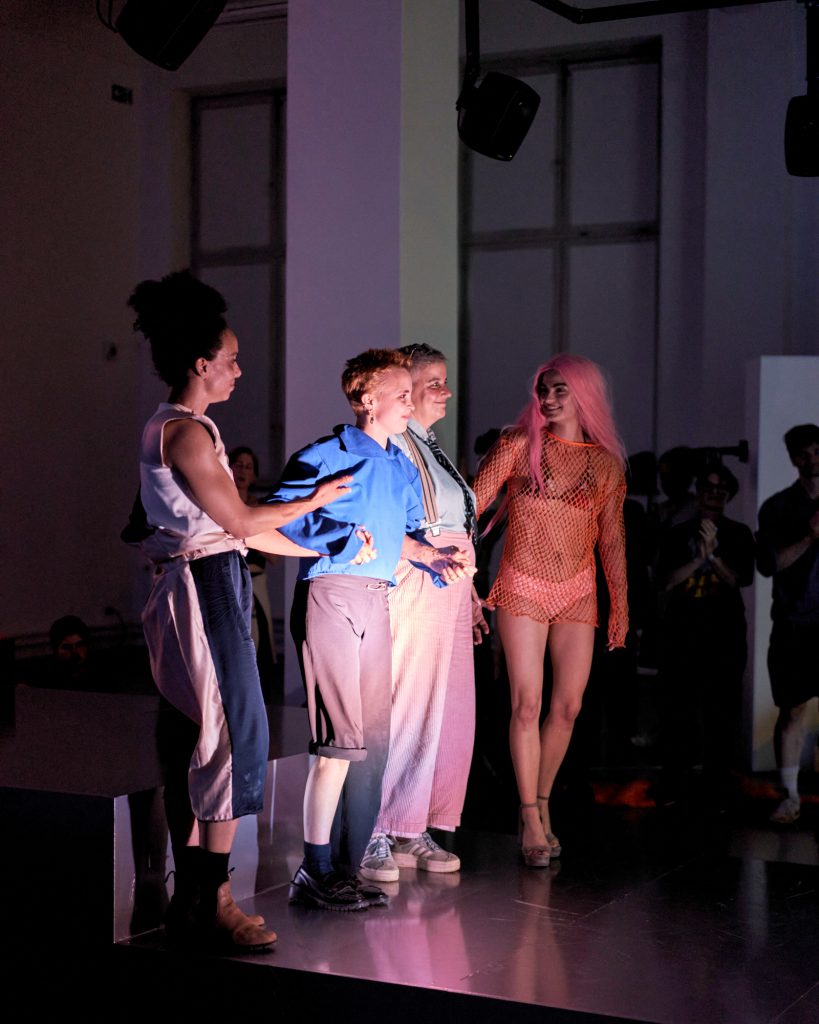
Publications
2LP
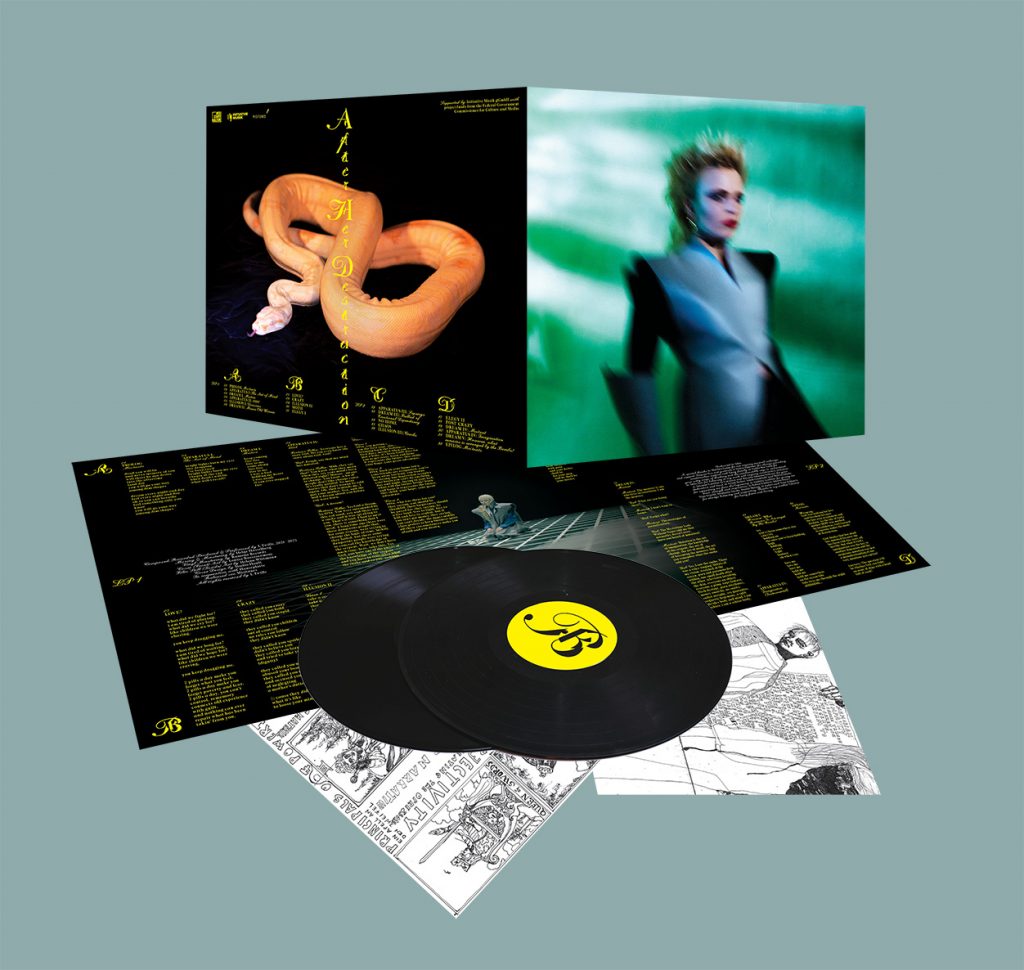
Listening
The music of [After her Destruction] opera was released via Misitunes on 16th February 2024. The double album comprises 22 compositions.
It is a limited edition of 300 copies.
Written, recorded, produced and performed
by L Twills;
Mixed and mastered by Helge Hasselberg
Vinylmastering by Martin Sukale
Cover Art by Louisa Boeszoermeny
Cover Art Inside (filmstill) by Helena Wittmann
Cover Design by Studio Hanli
Supported by Initiative gGmbH with project funds from the Federel Government Commissioner for Culture and Media In cooperation with Hanseplatte
Booklet
Foto Credits:
Louisa Boeszoermeny: Pages 2, 3,7, 11, 14, 18, 23
Suzanne Caroline de Carrasco: Pages 6, 12, 13, 20
Helena Wittmann (film stills): Pages 1, 4/5, 8/9, 10, 15, 16/17, 19, 21, 22, 24
Performers:
Lexi Callimero, Elliot Reed, Linda Elsner, Sibylle Peters, Anto López Espinosa, Don Jegosah, Luïza Luz, Suma Abdelsamie, Albino Boa, L Twills
Hair and Make-up:
Maike Albeck: Pages 1, 8/9, 10, 12, 13, 15, 16/17, 21
Mariya Madzharova: Pages 2,7, 11, 14, 23
Painting (Page 8/9) by Frieda Toranzo Jäger
Costumes, art direction and texts by L Twills
Designed by Studio Hanli
2023
The [After her Destruction] booklet comprises images from behind the scenes taken by Susanne Caroline de Carrasco, filmstills by Helena Wittmann, as well as staged scenes fotographed by Louisa Boeszoermeny.
